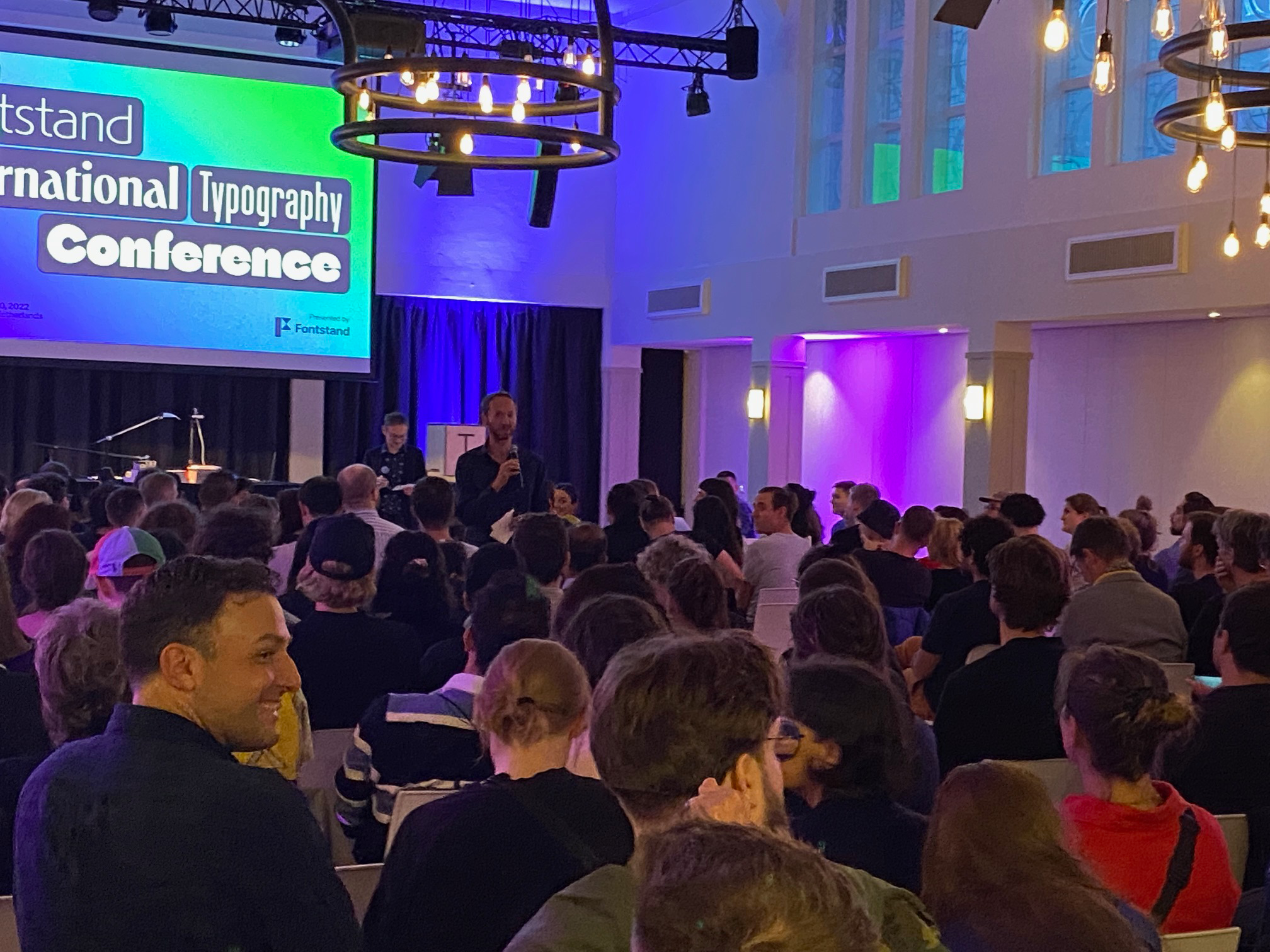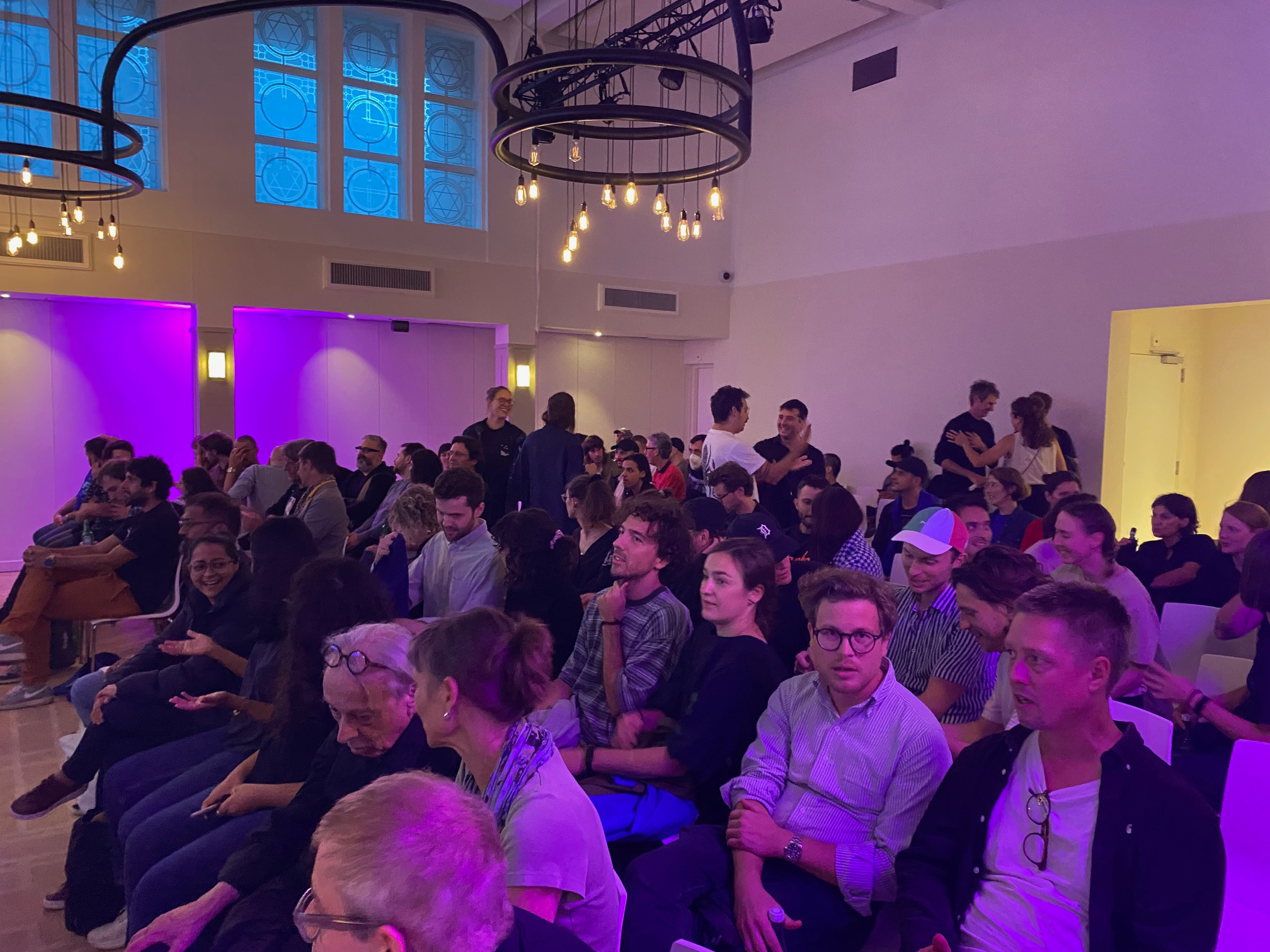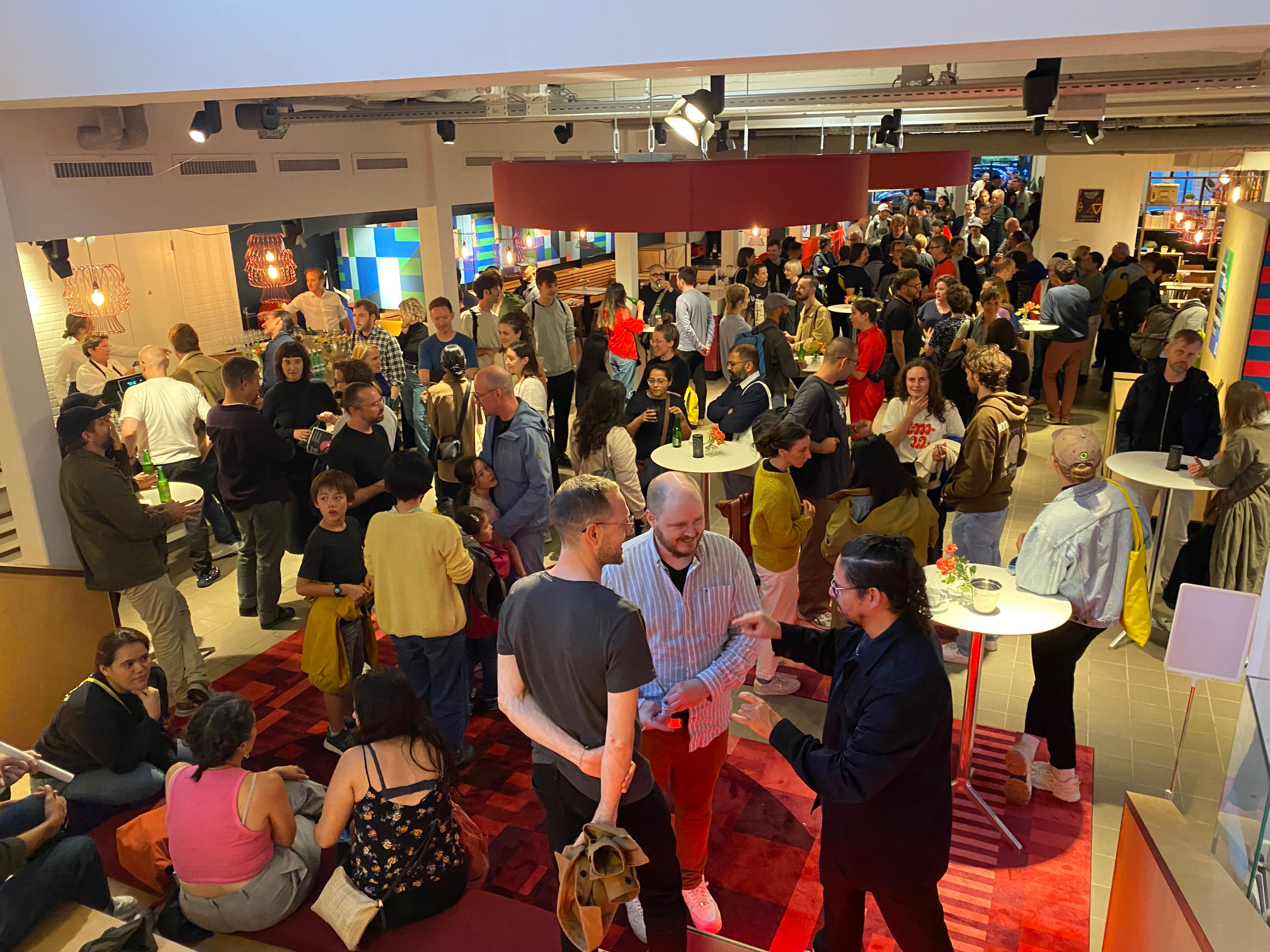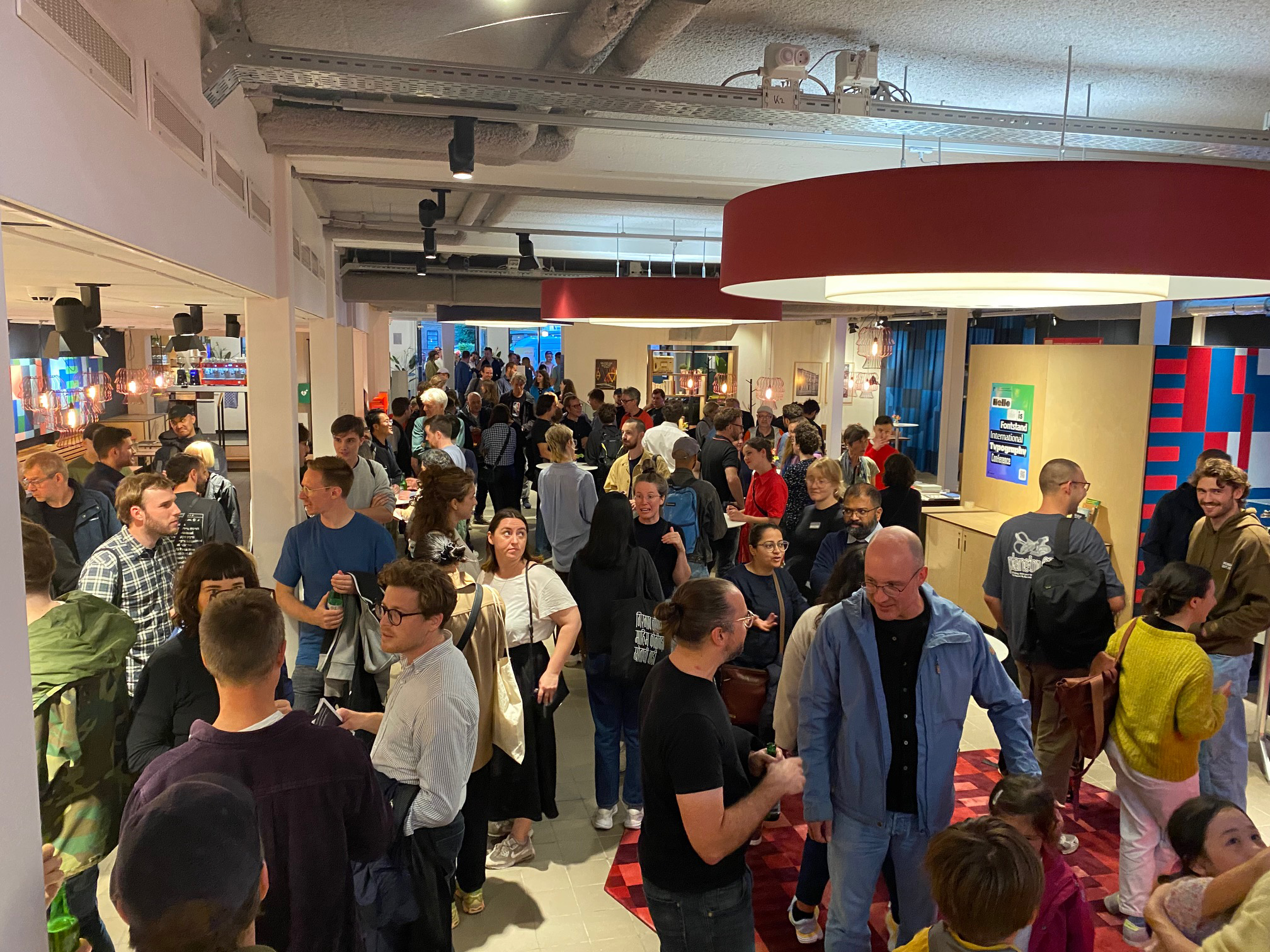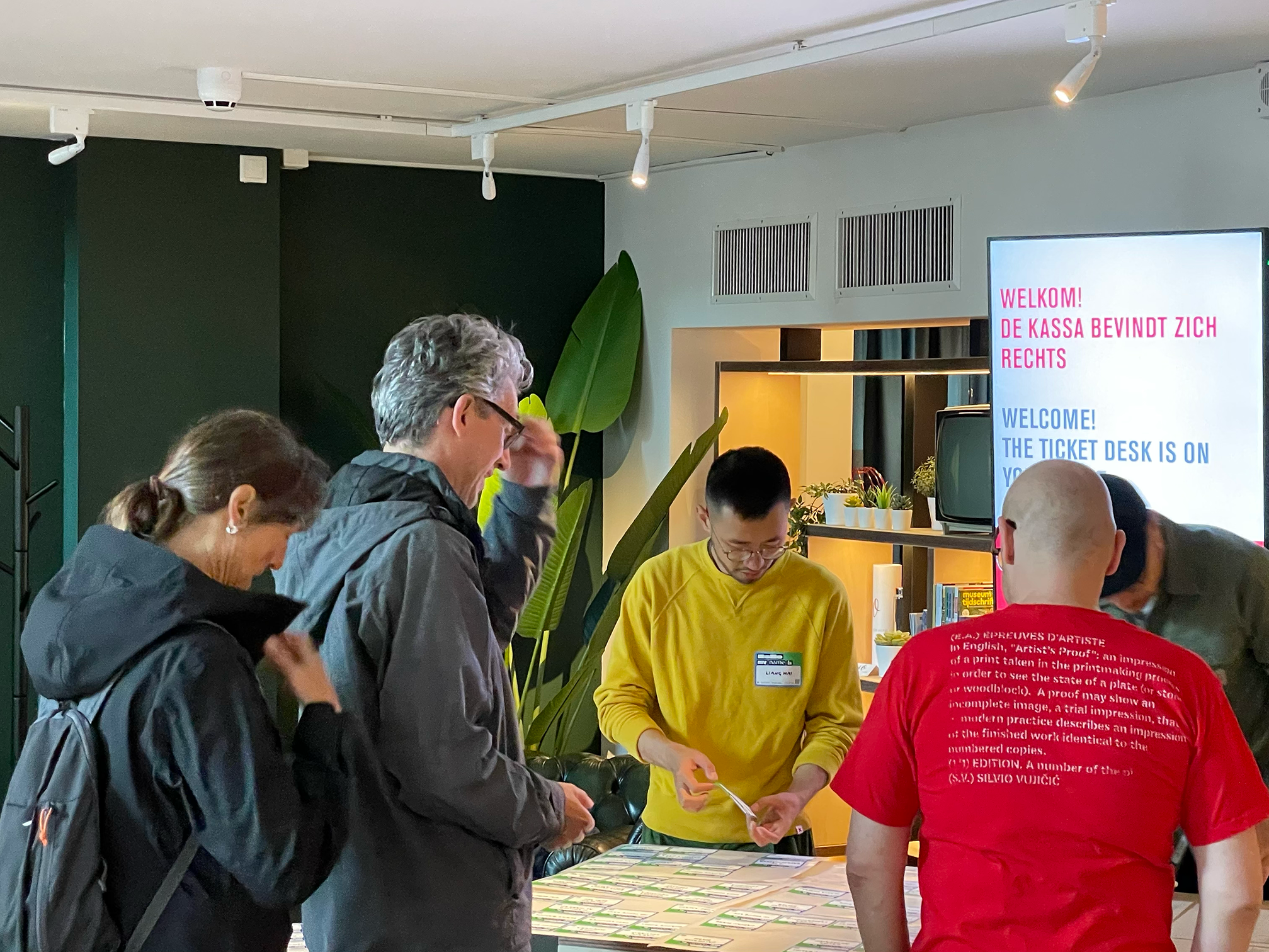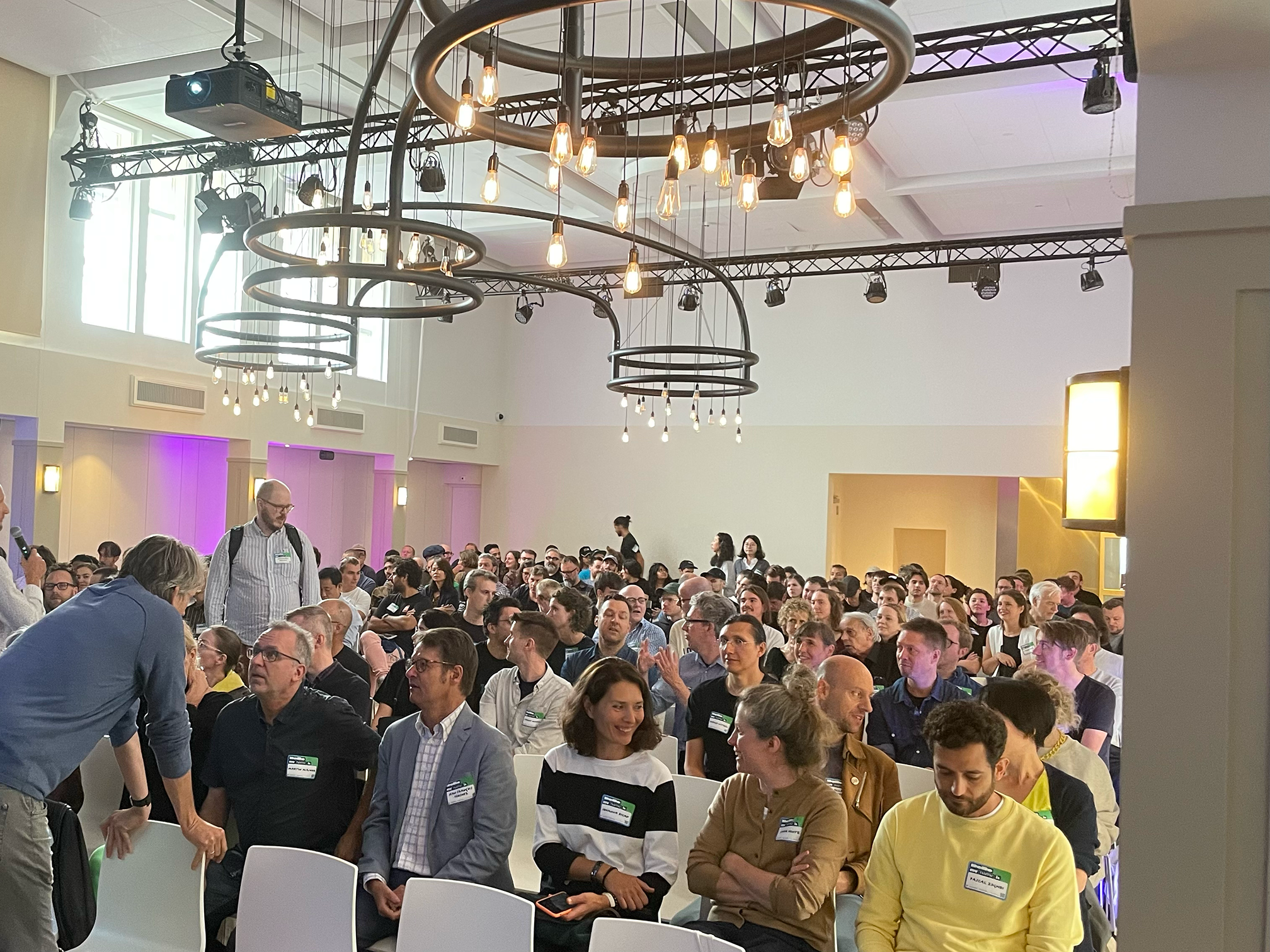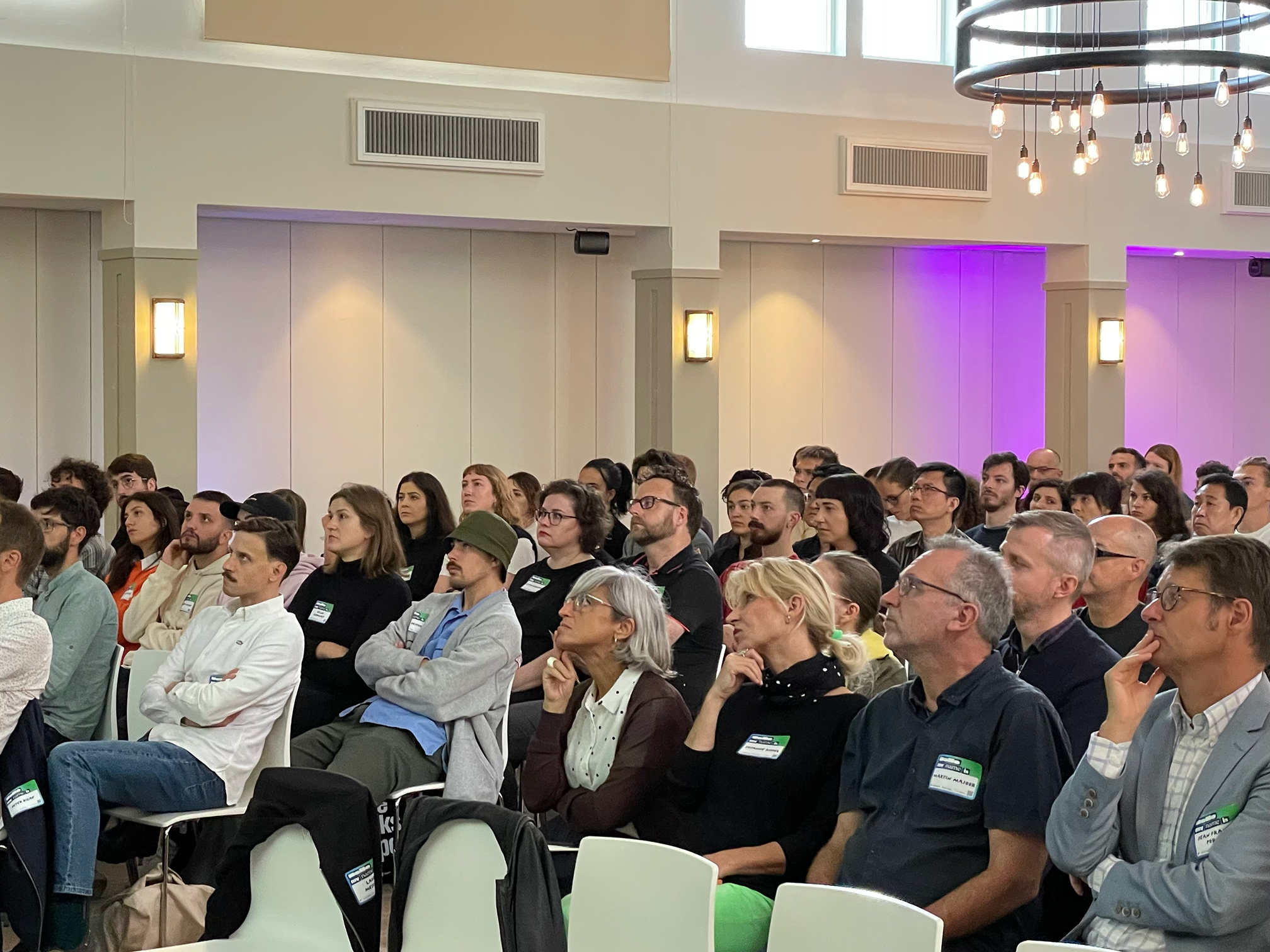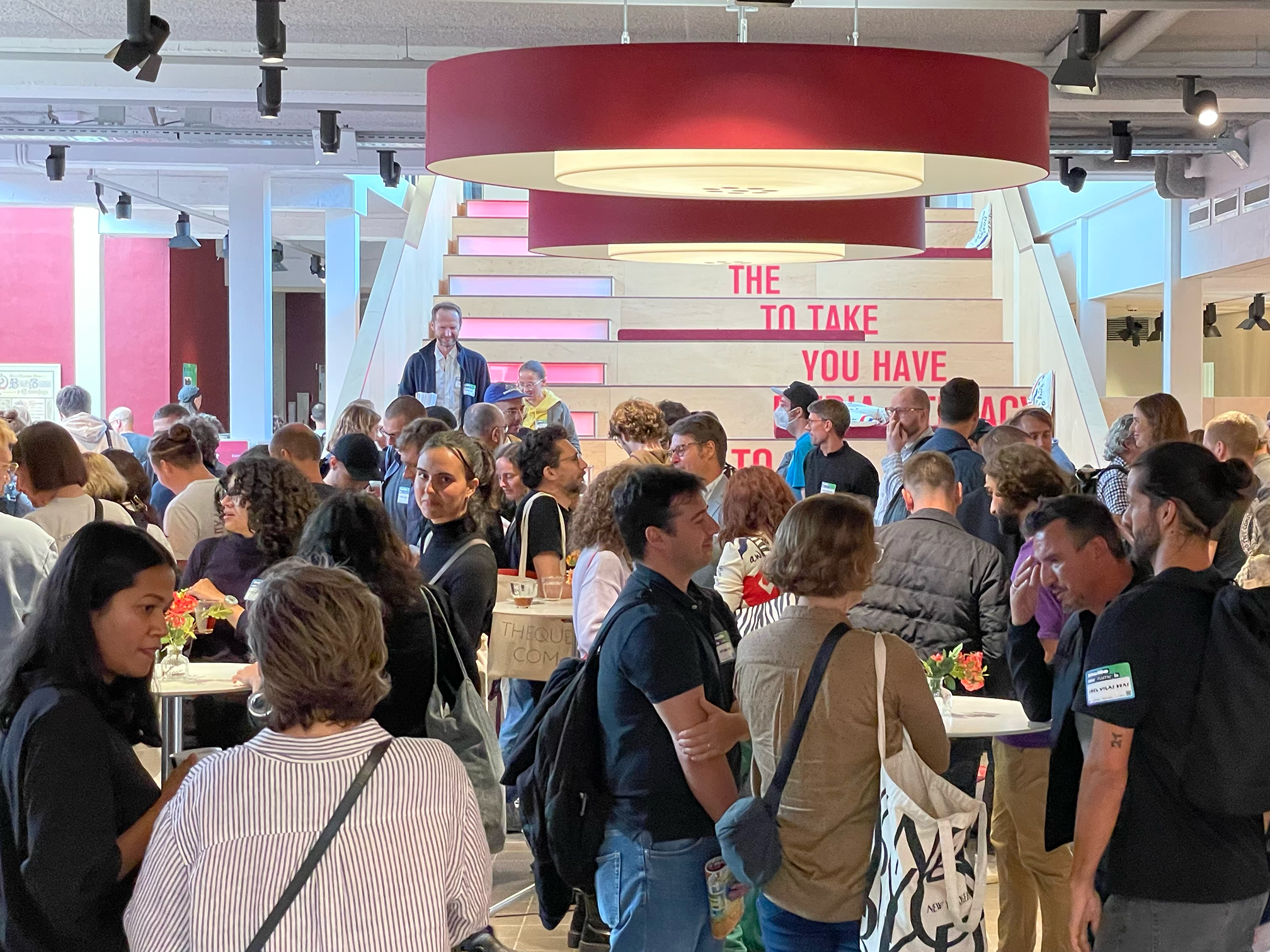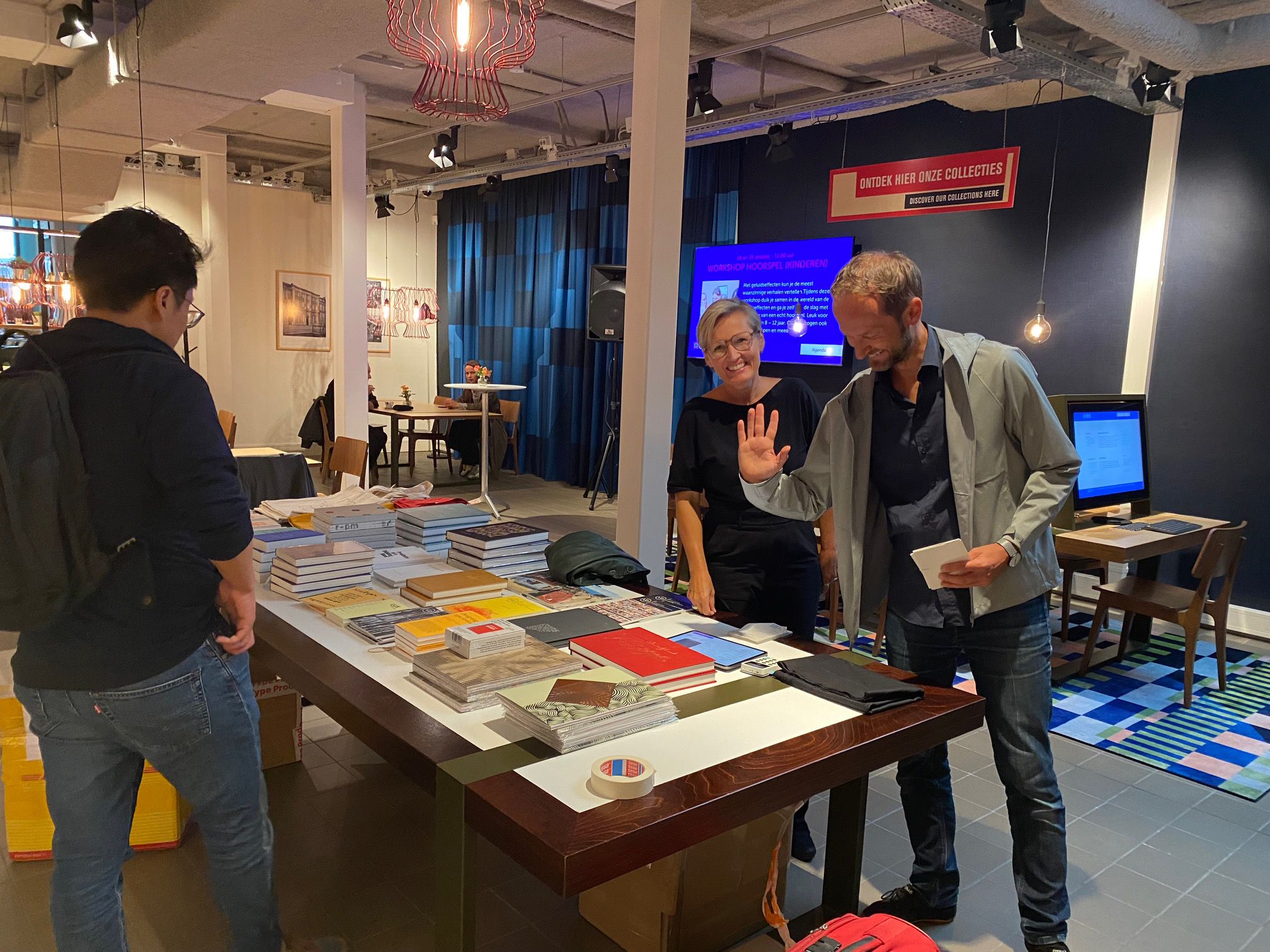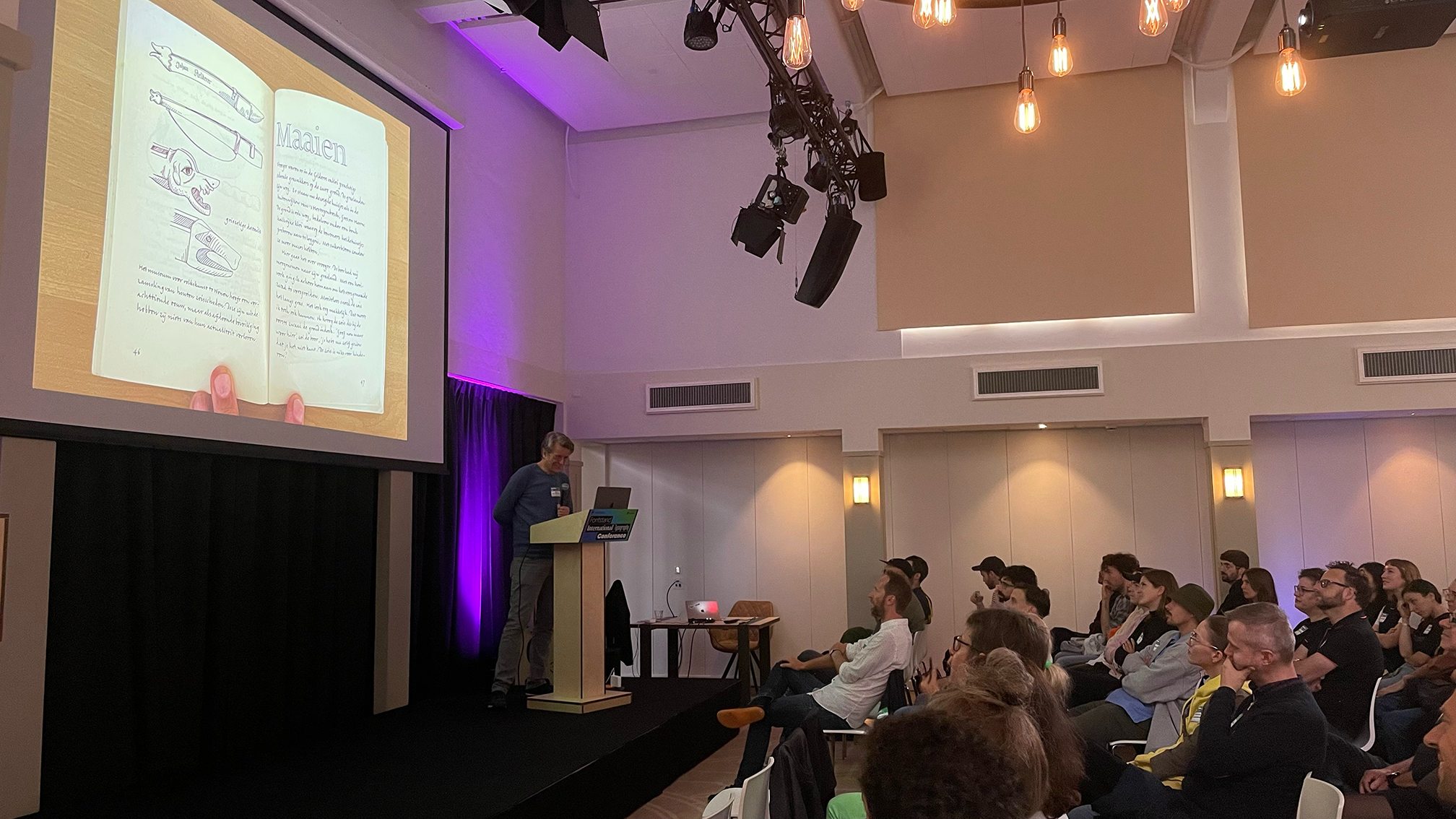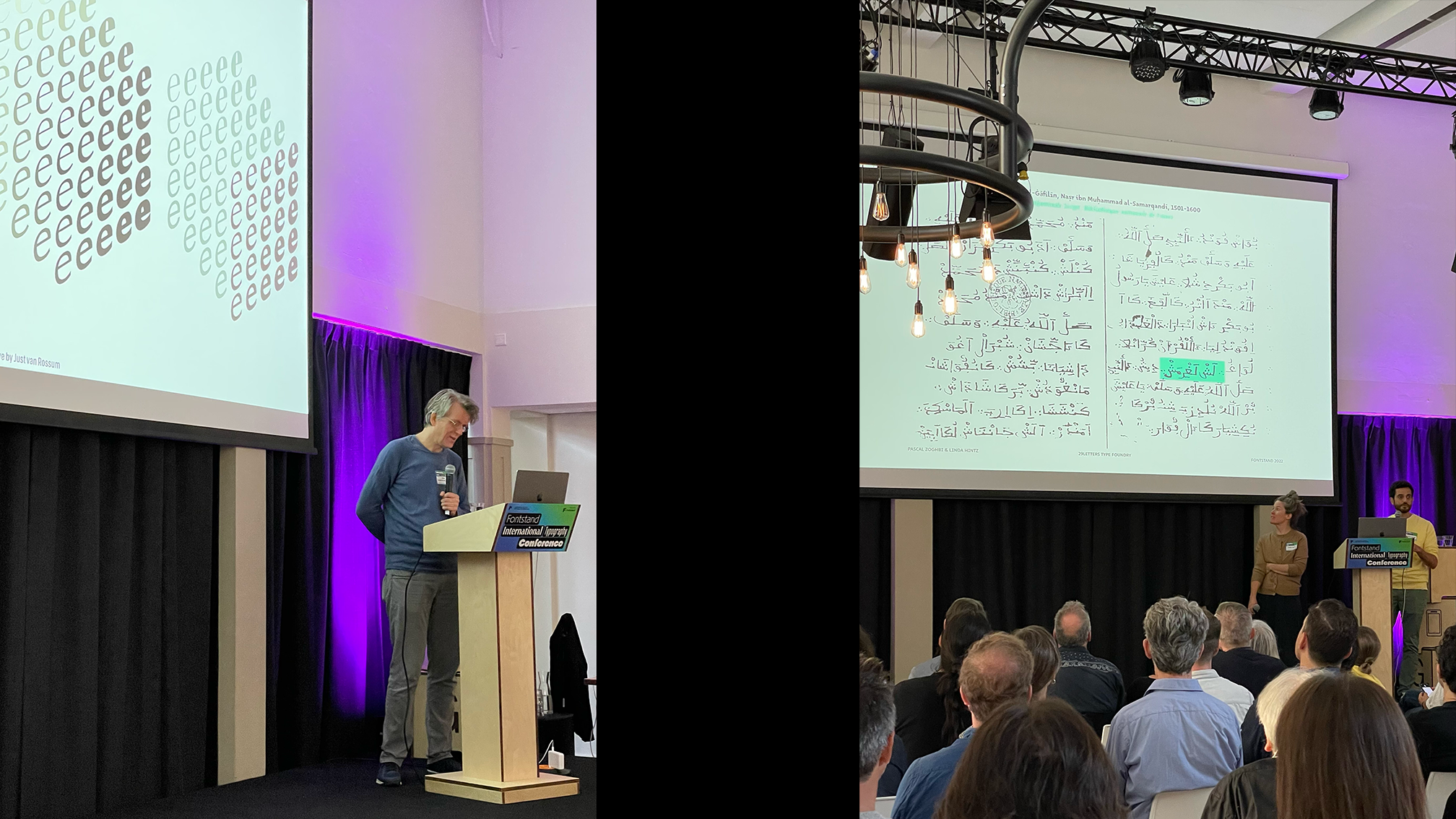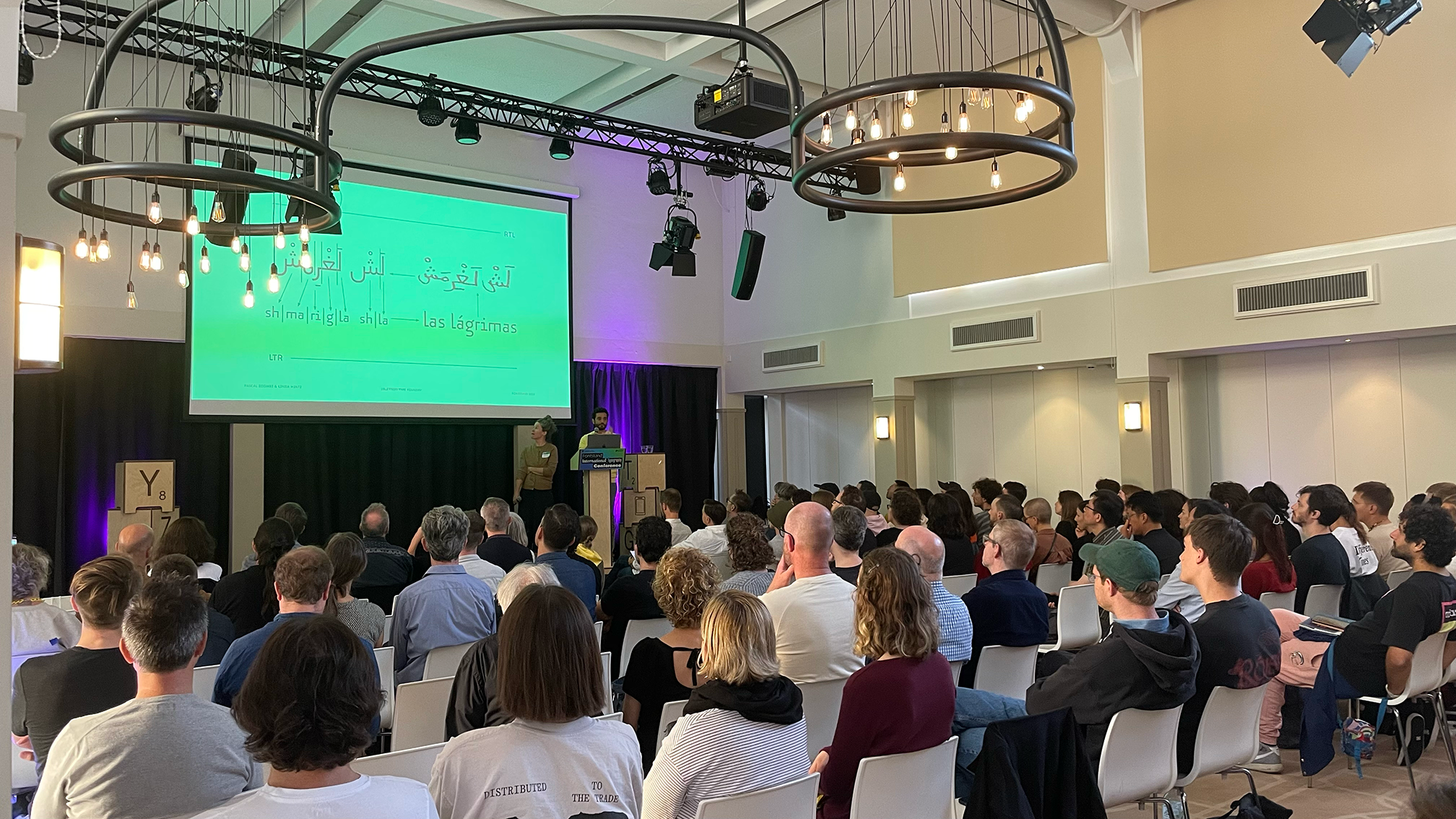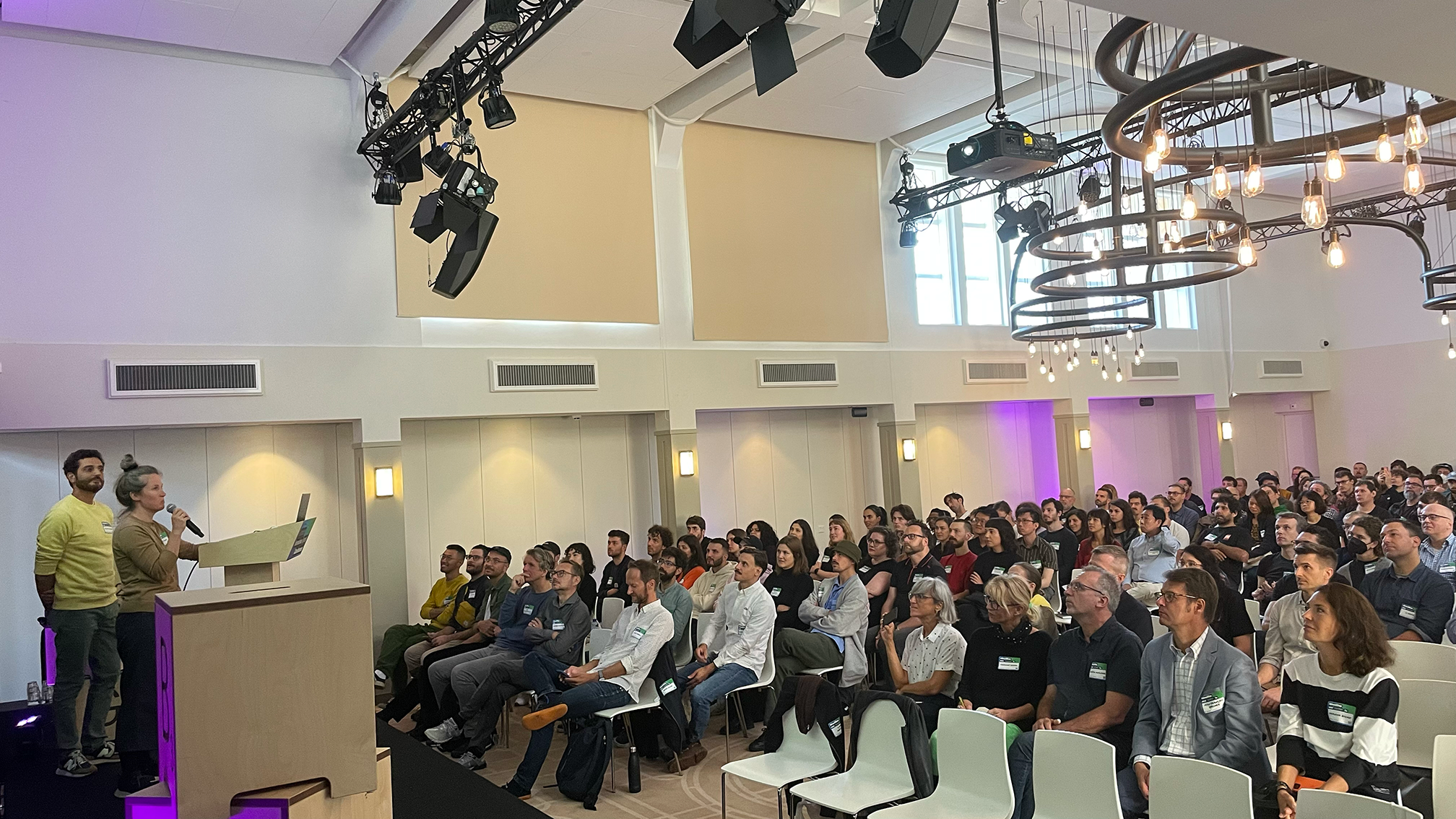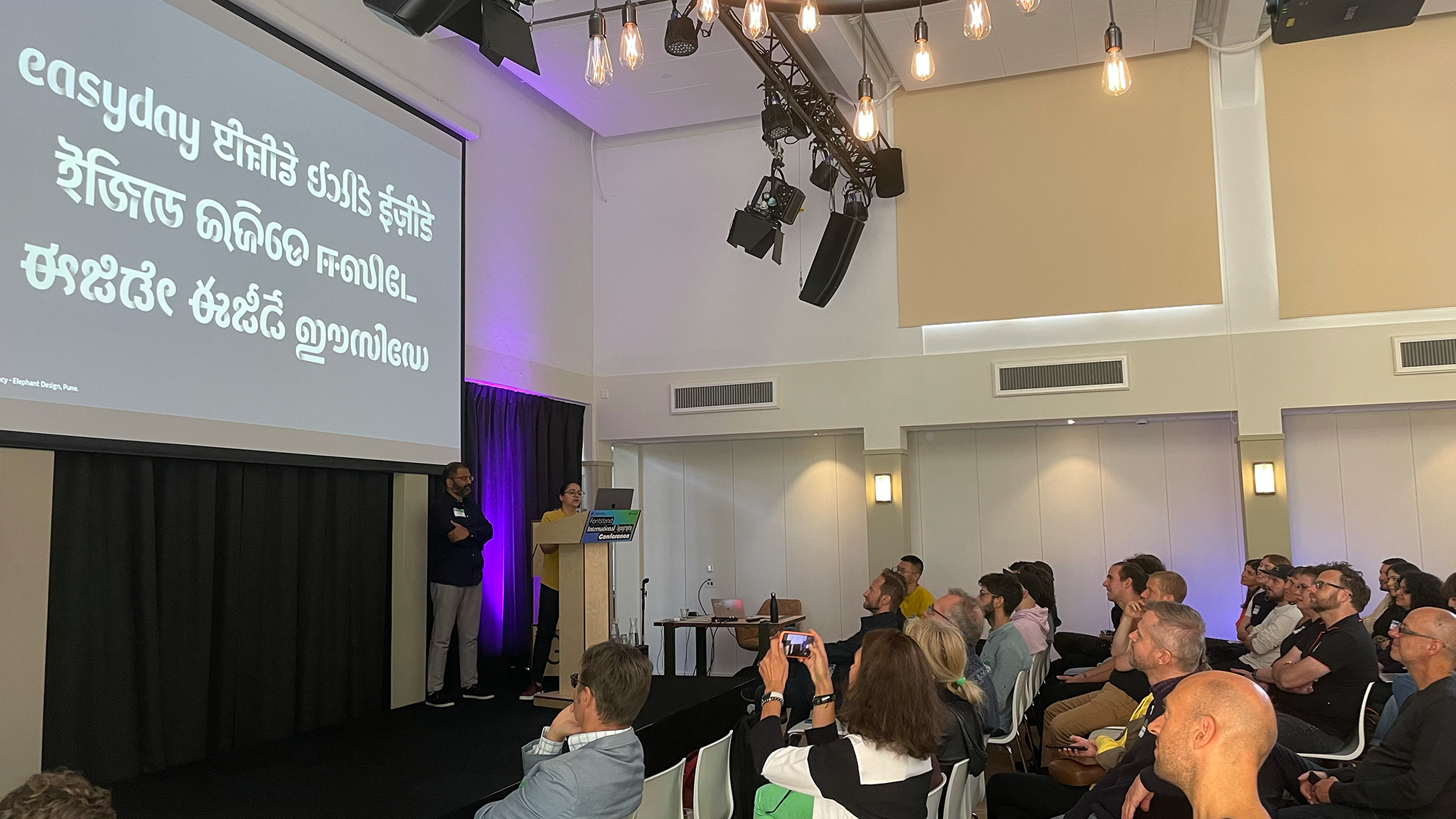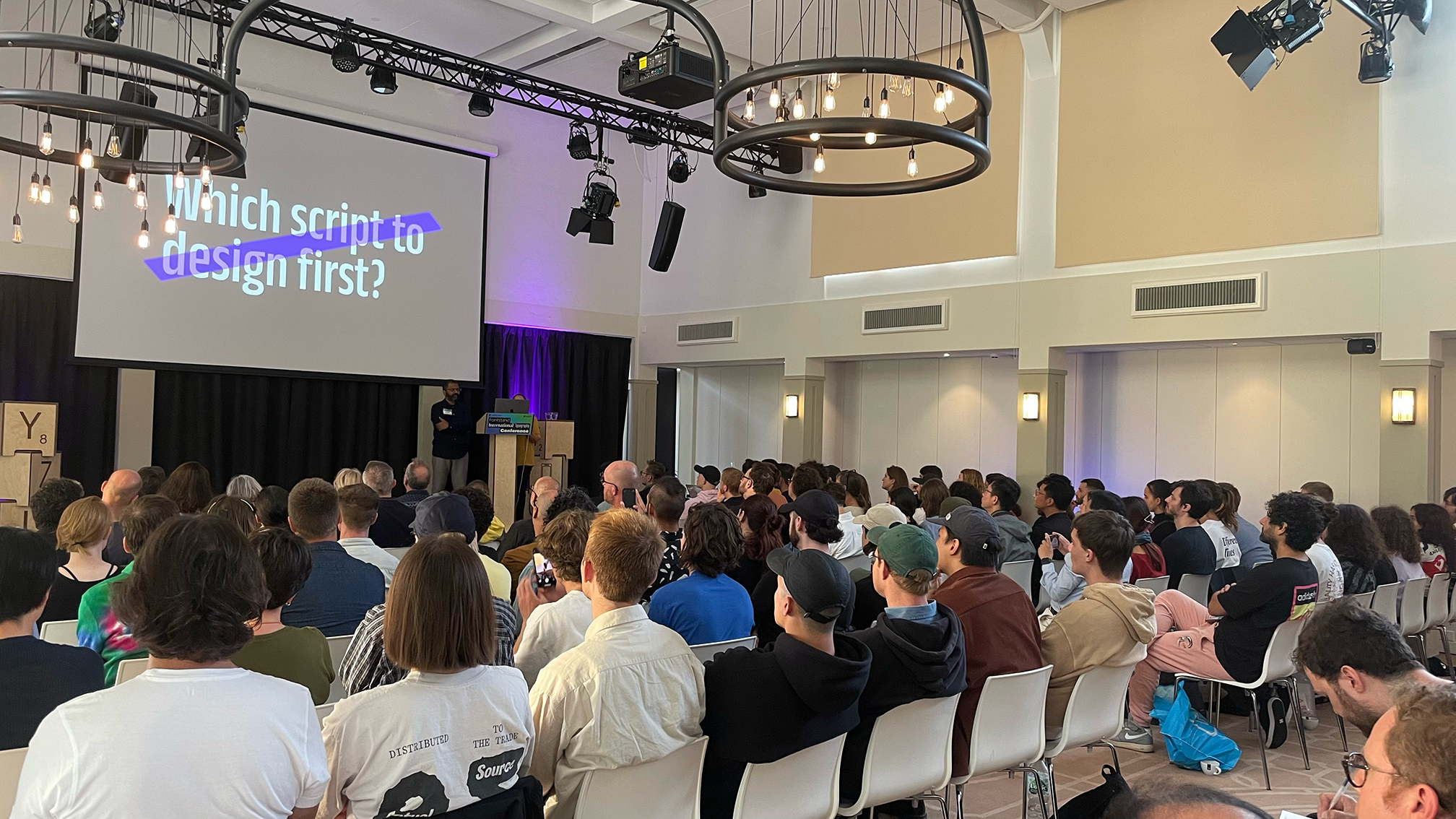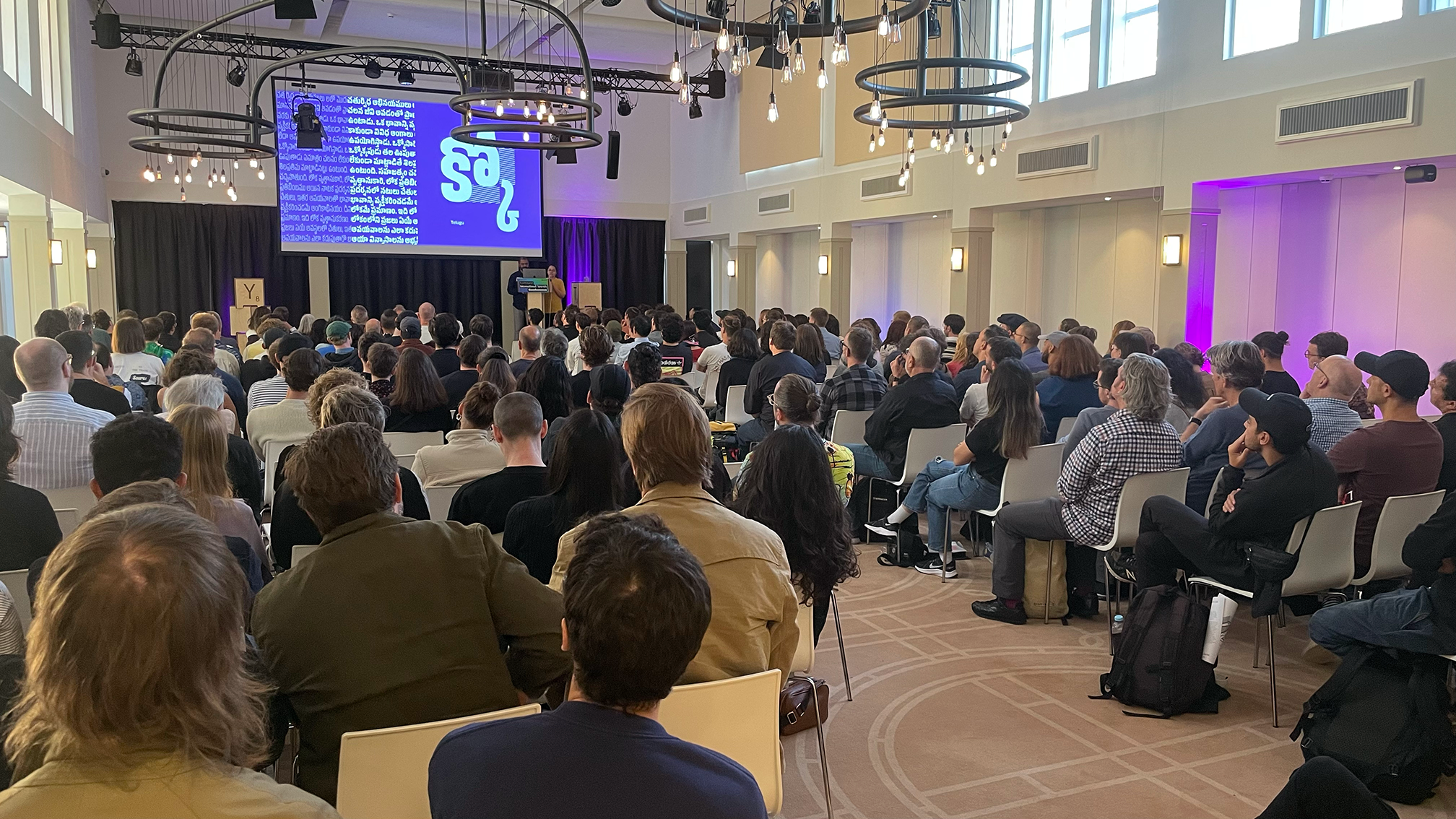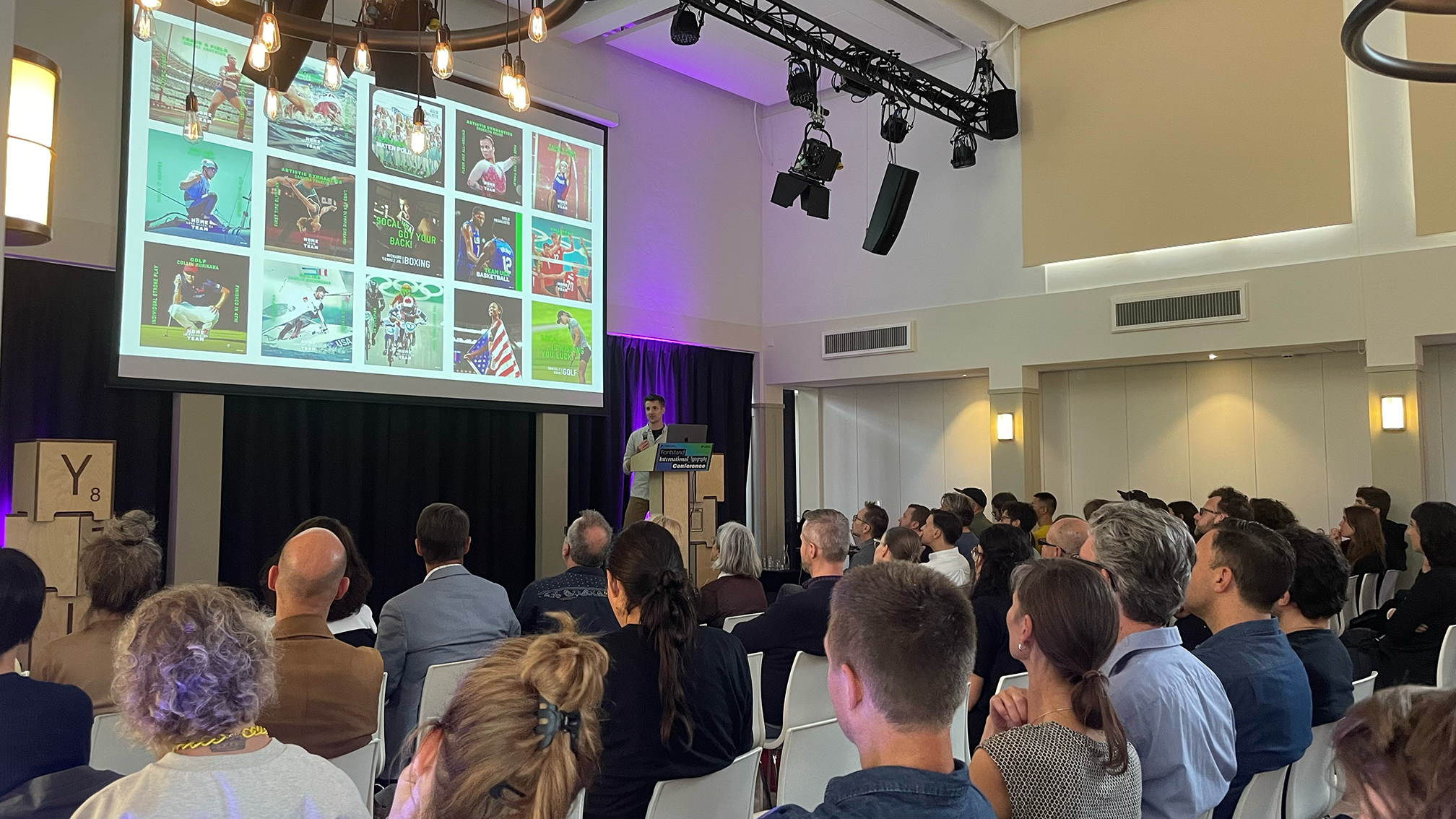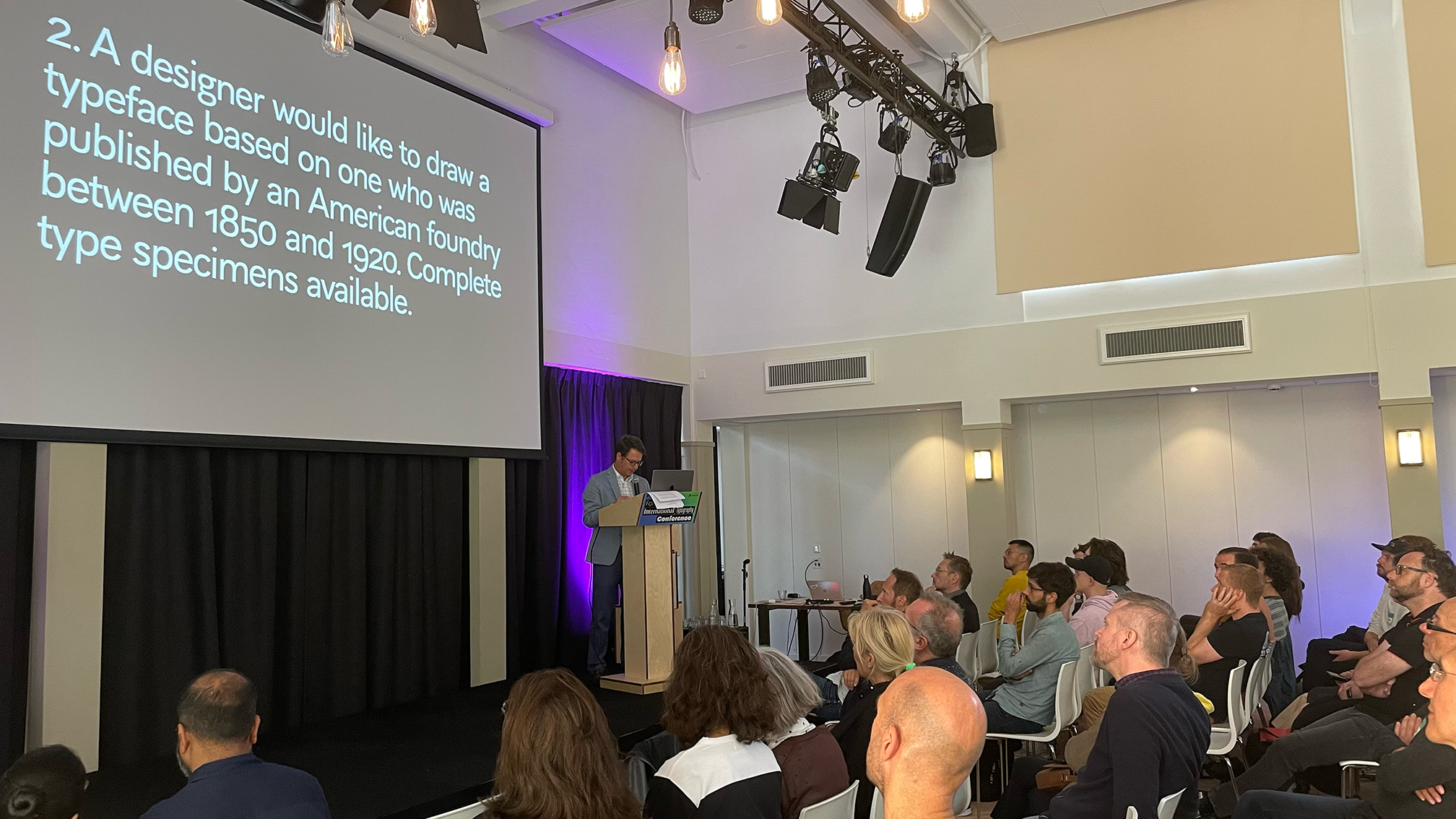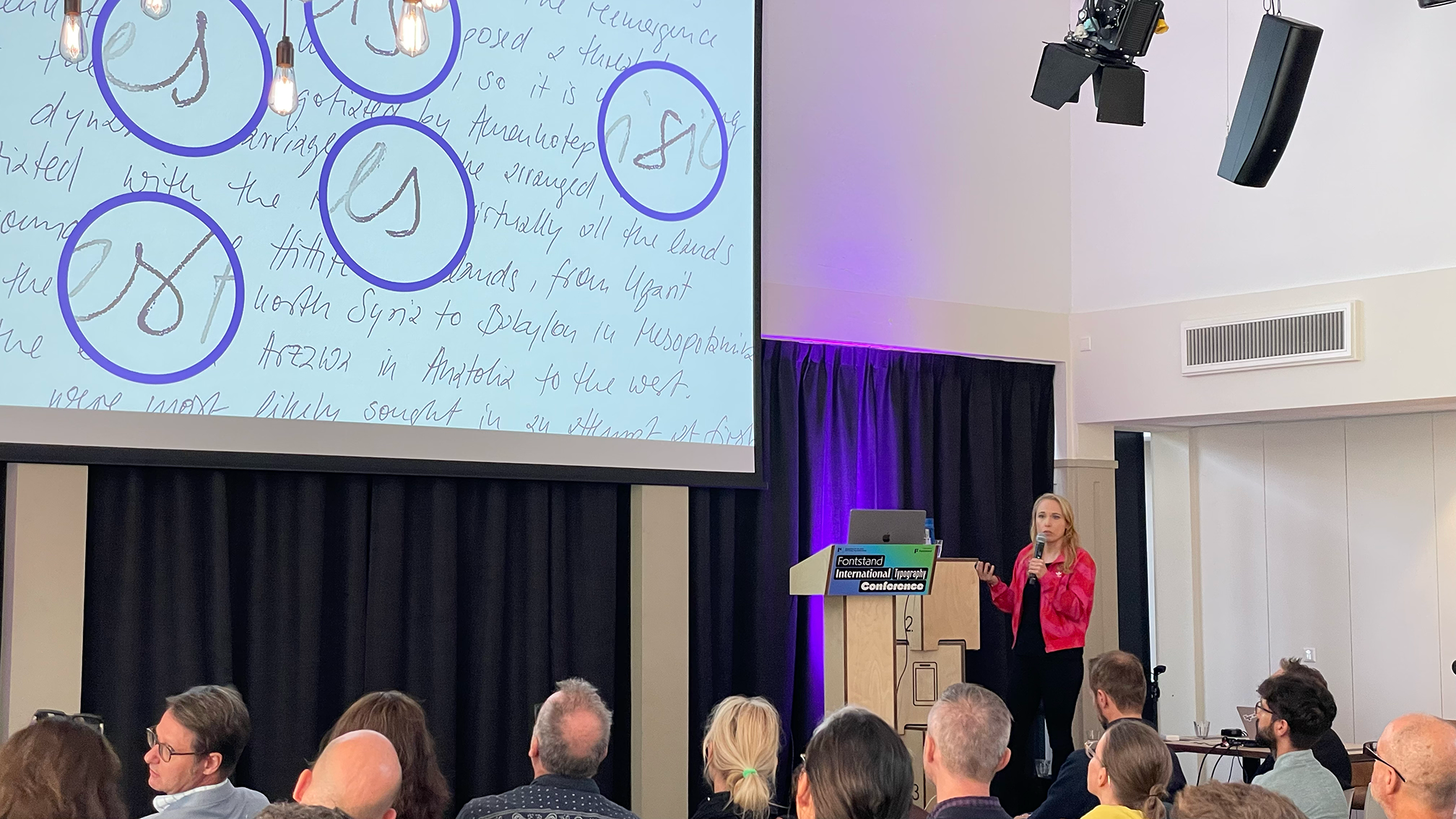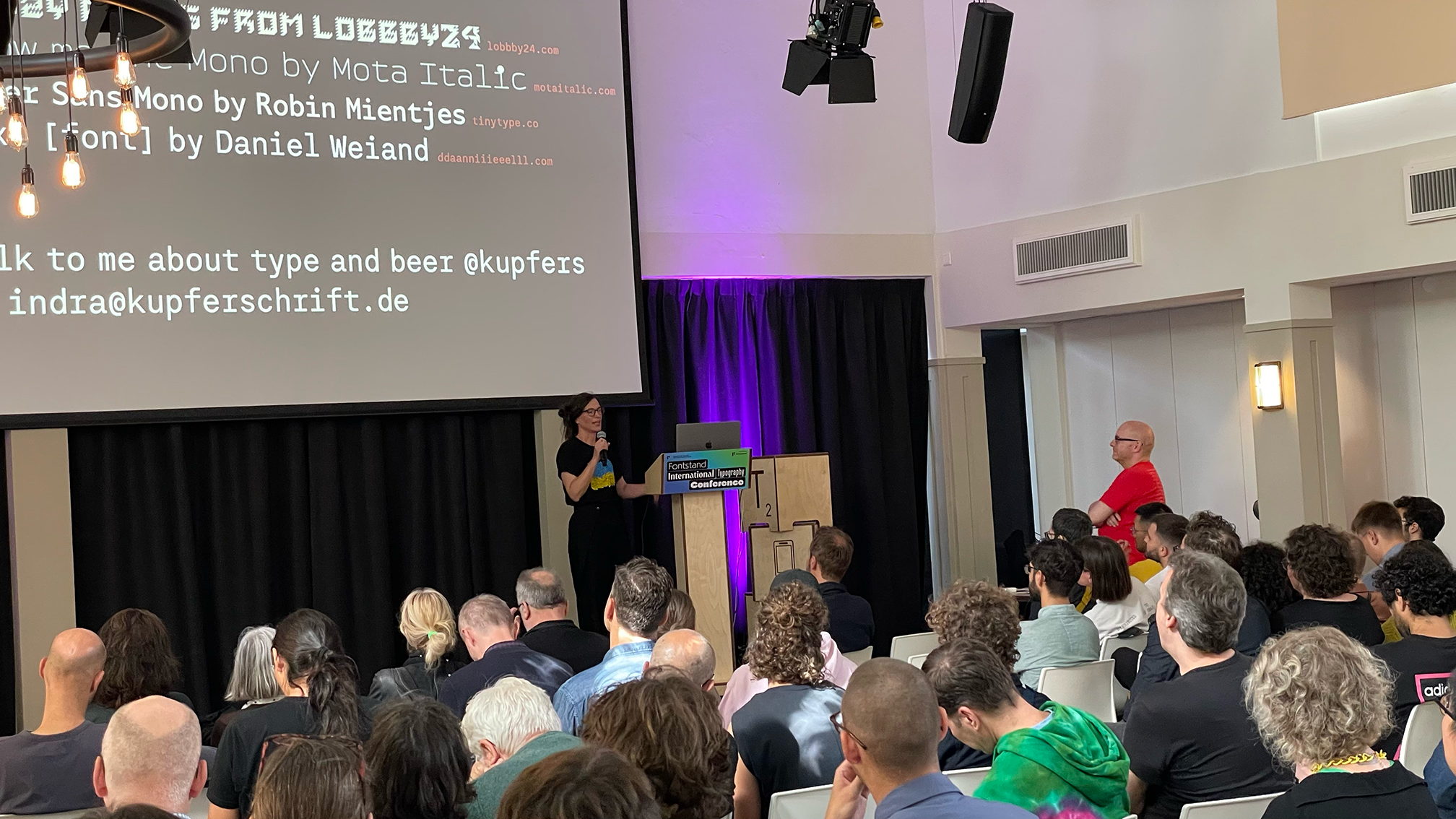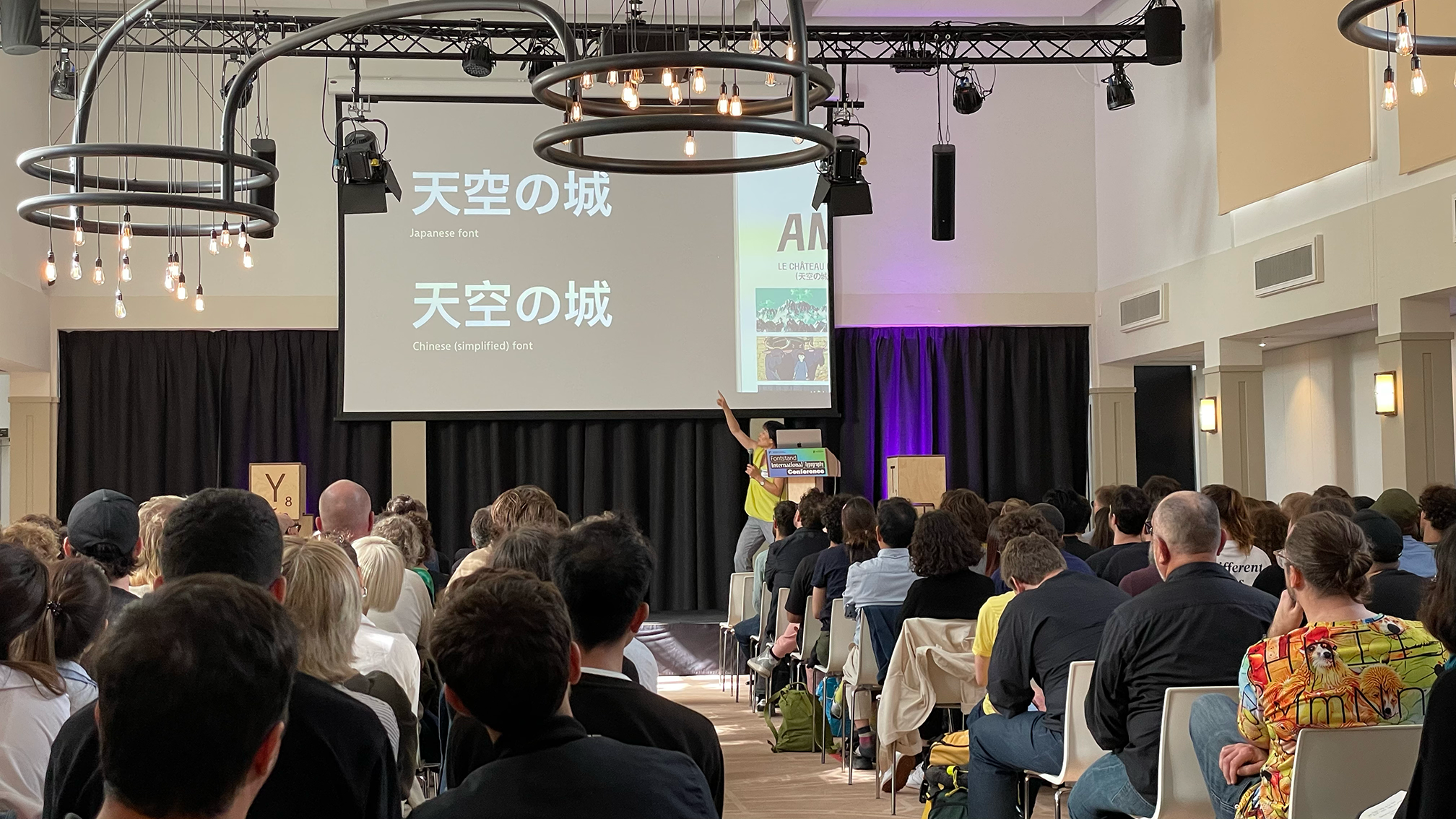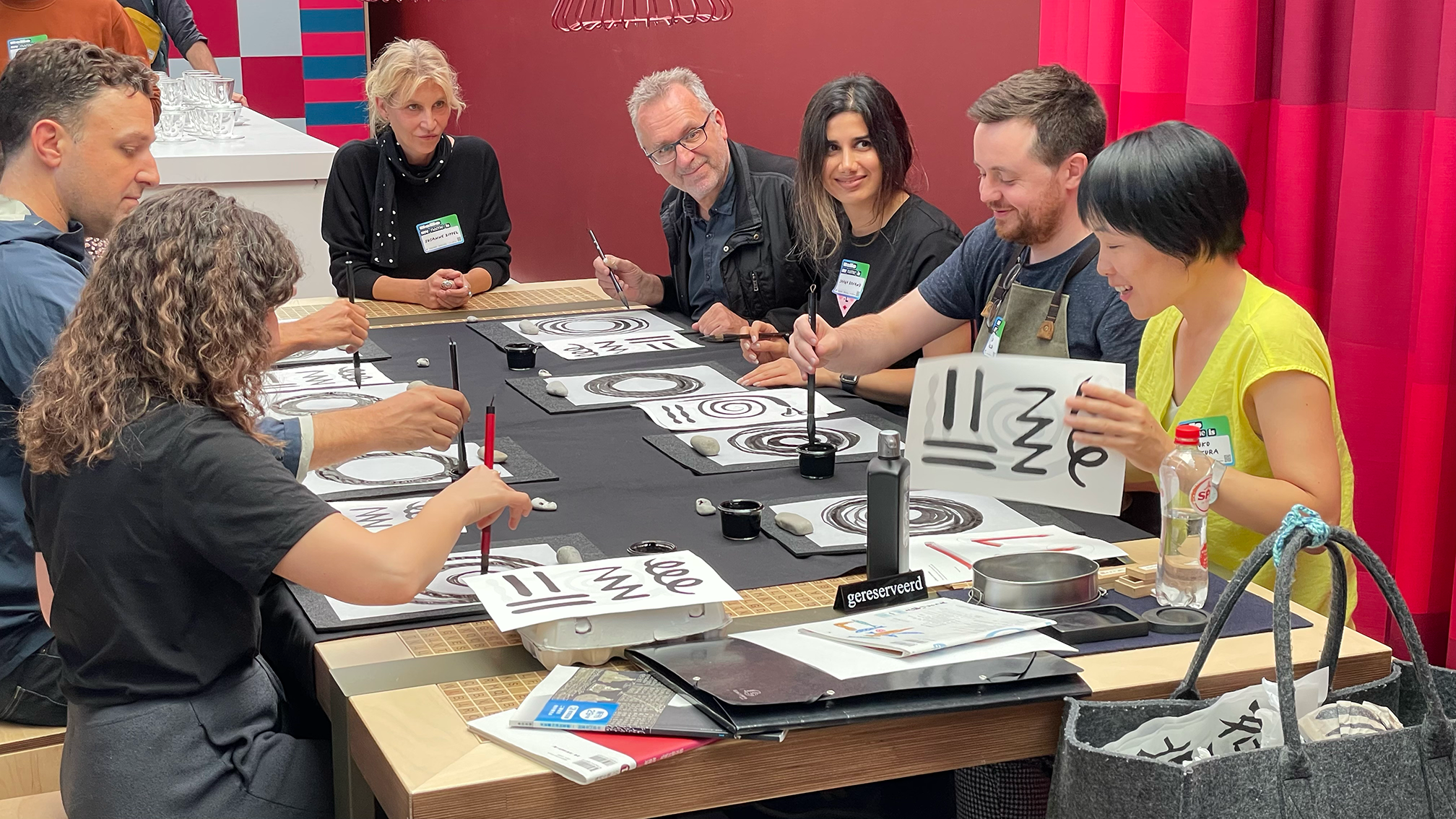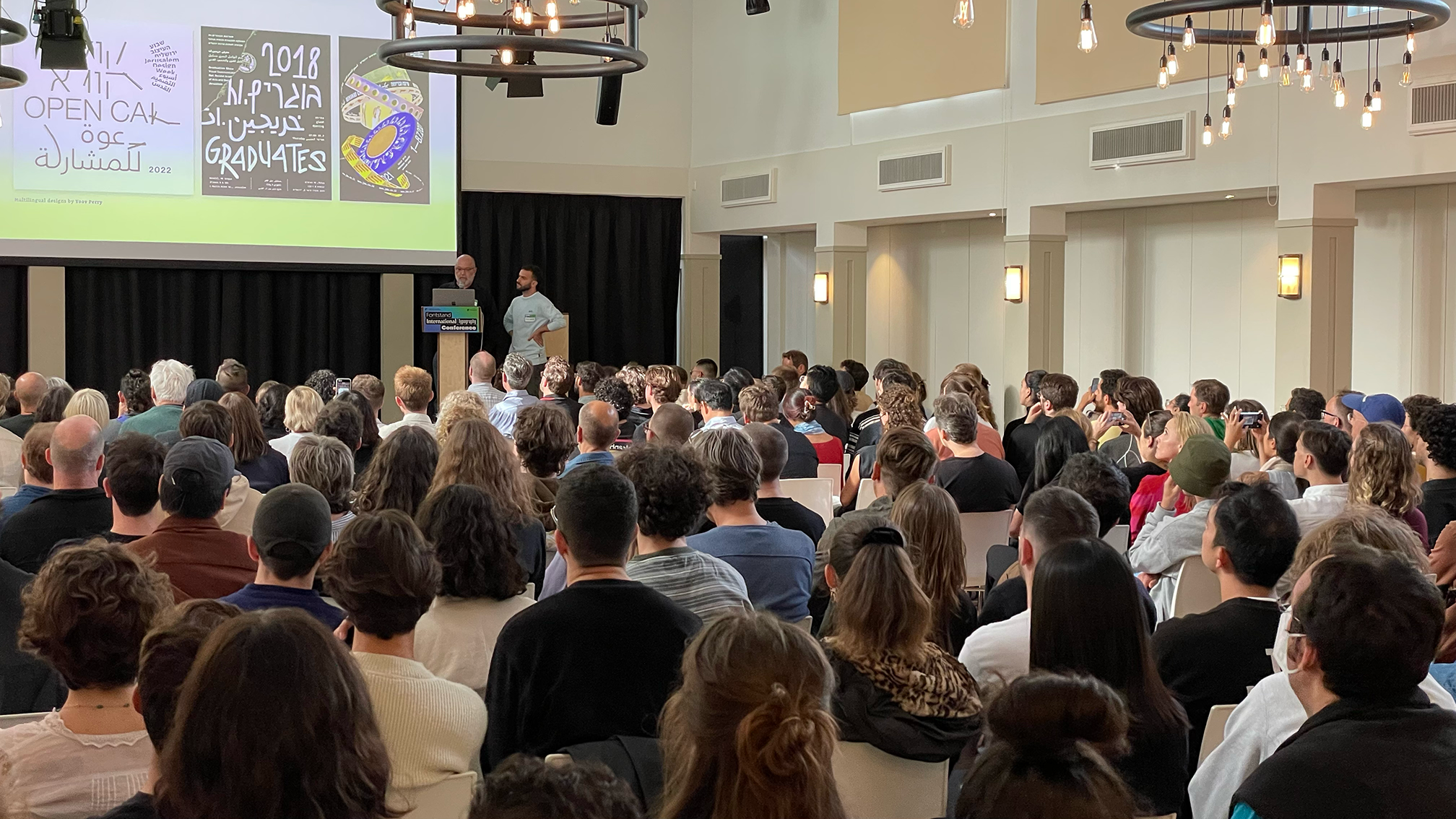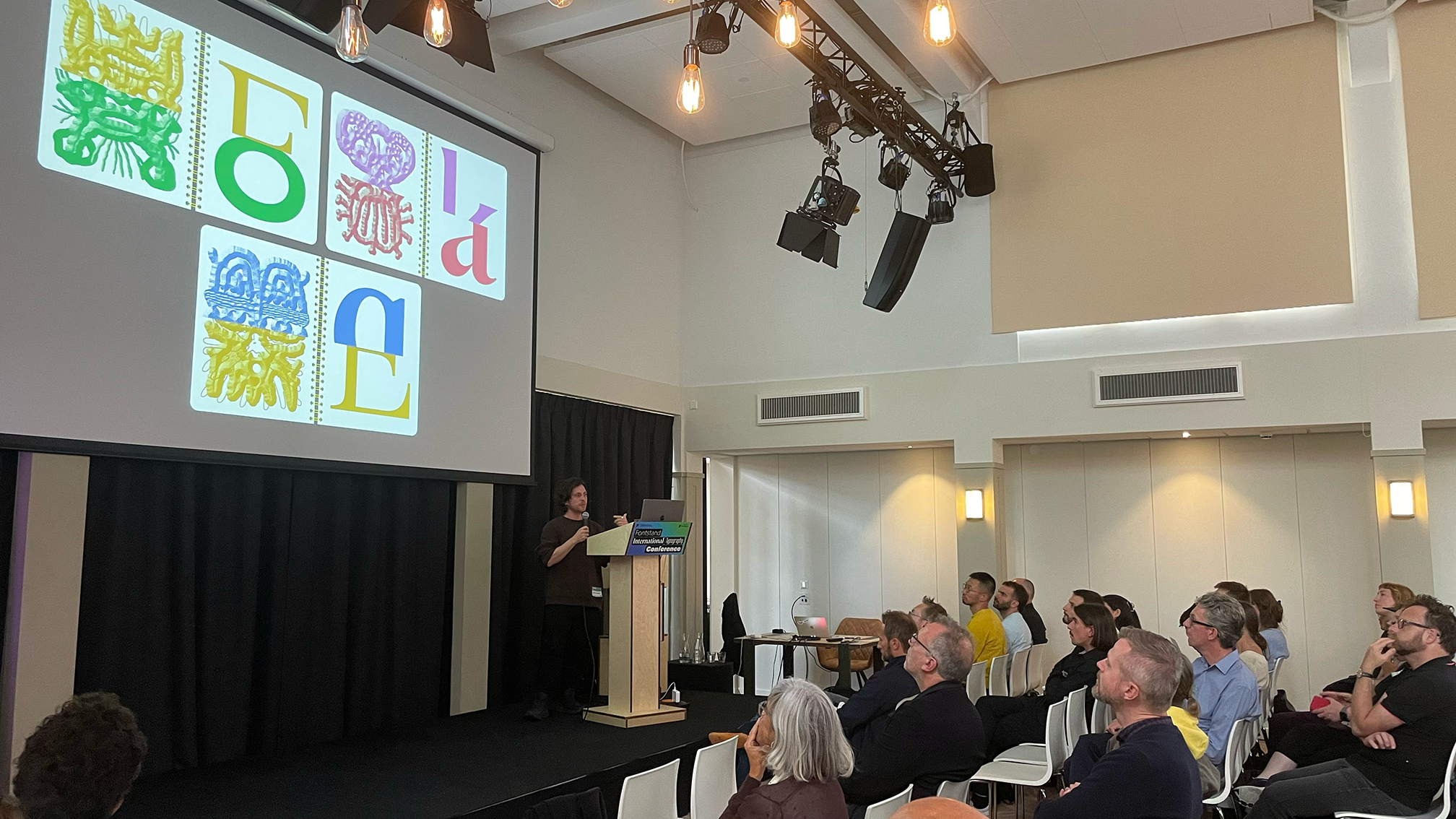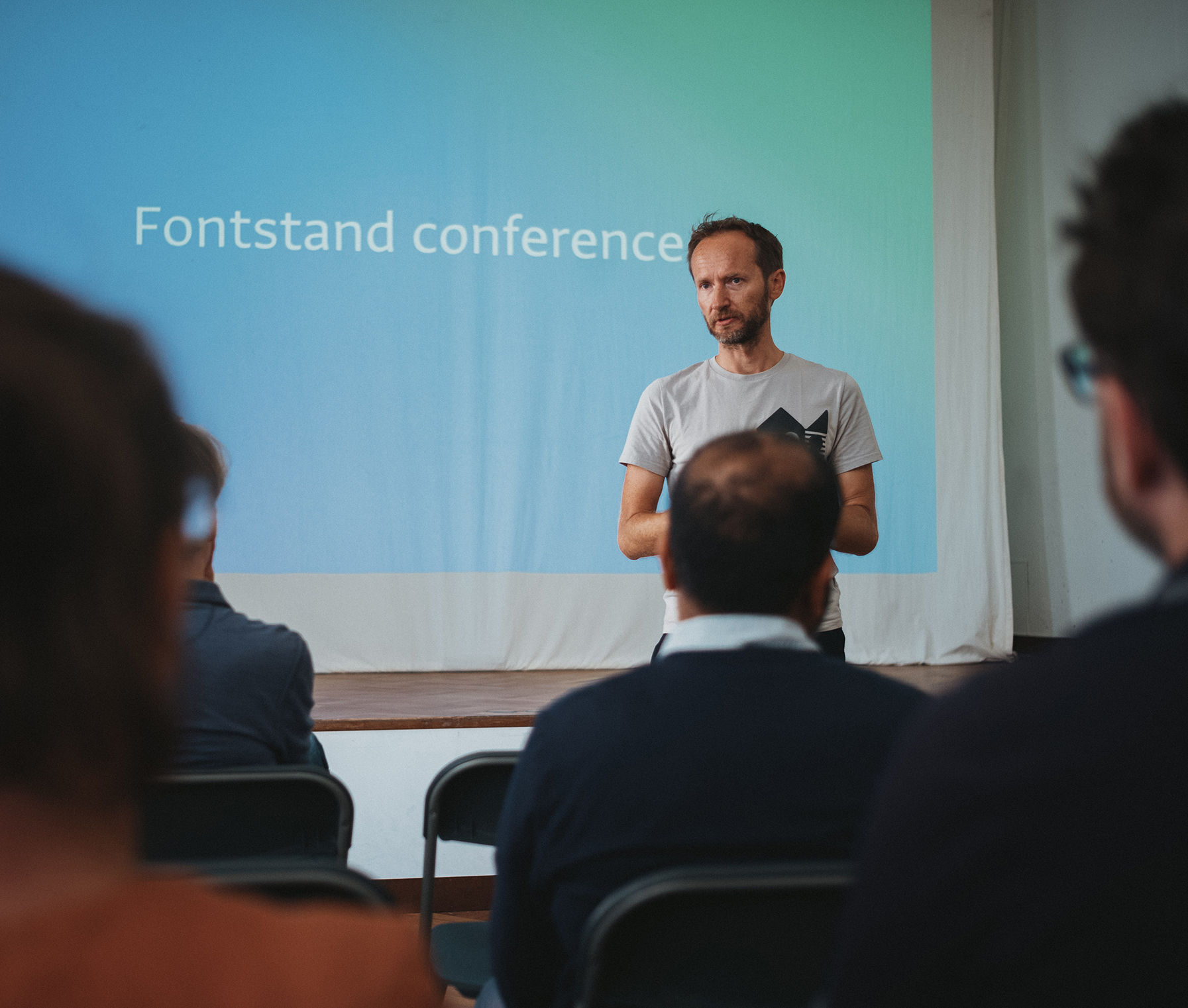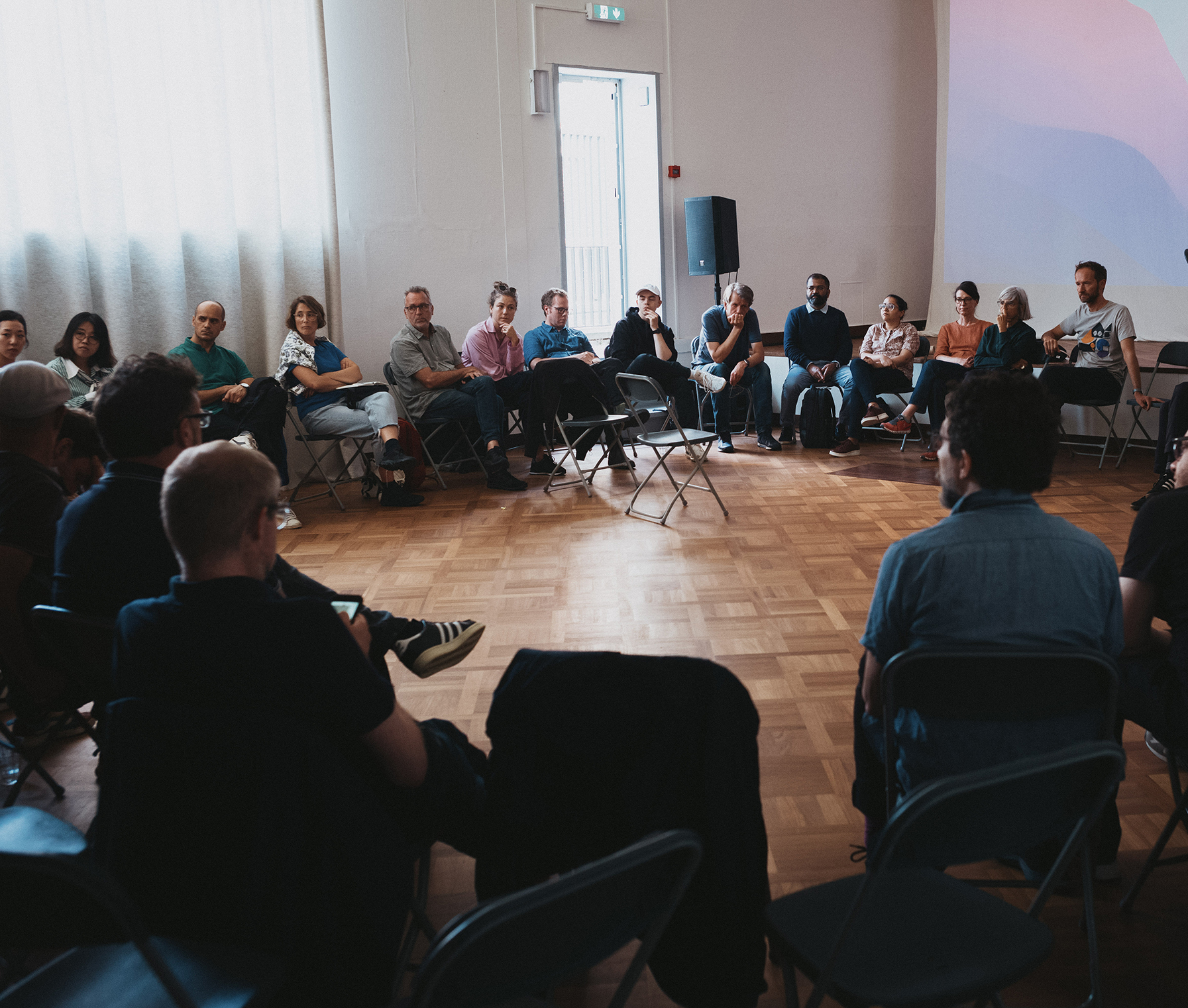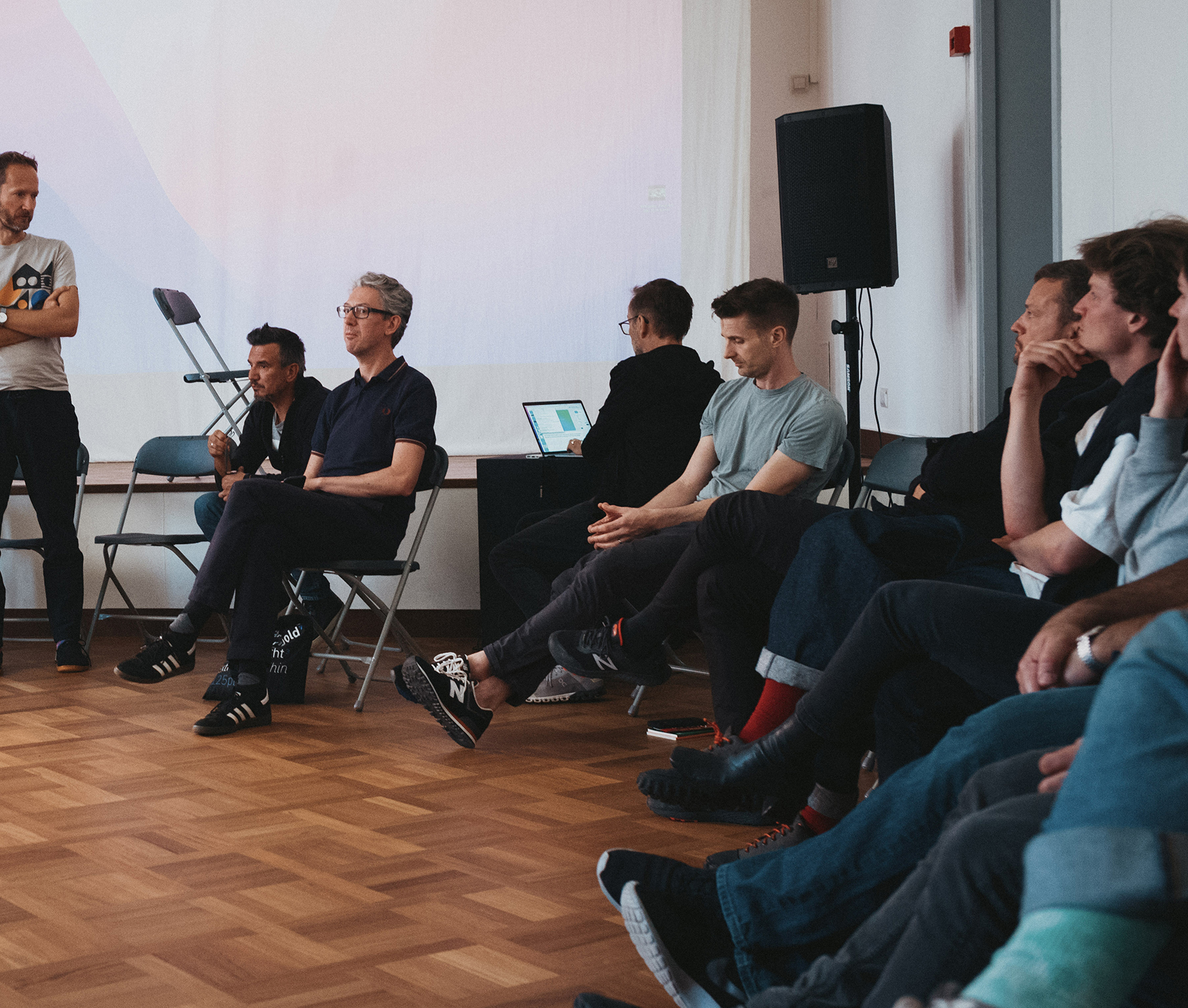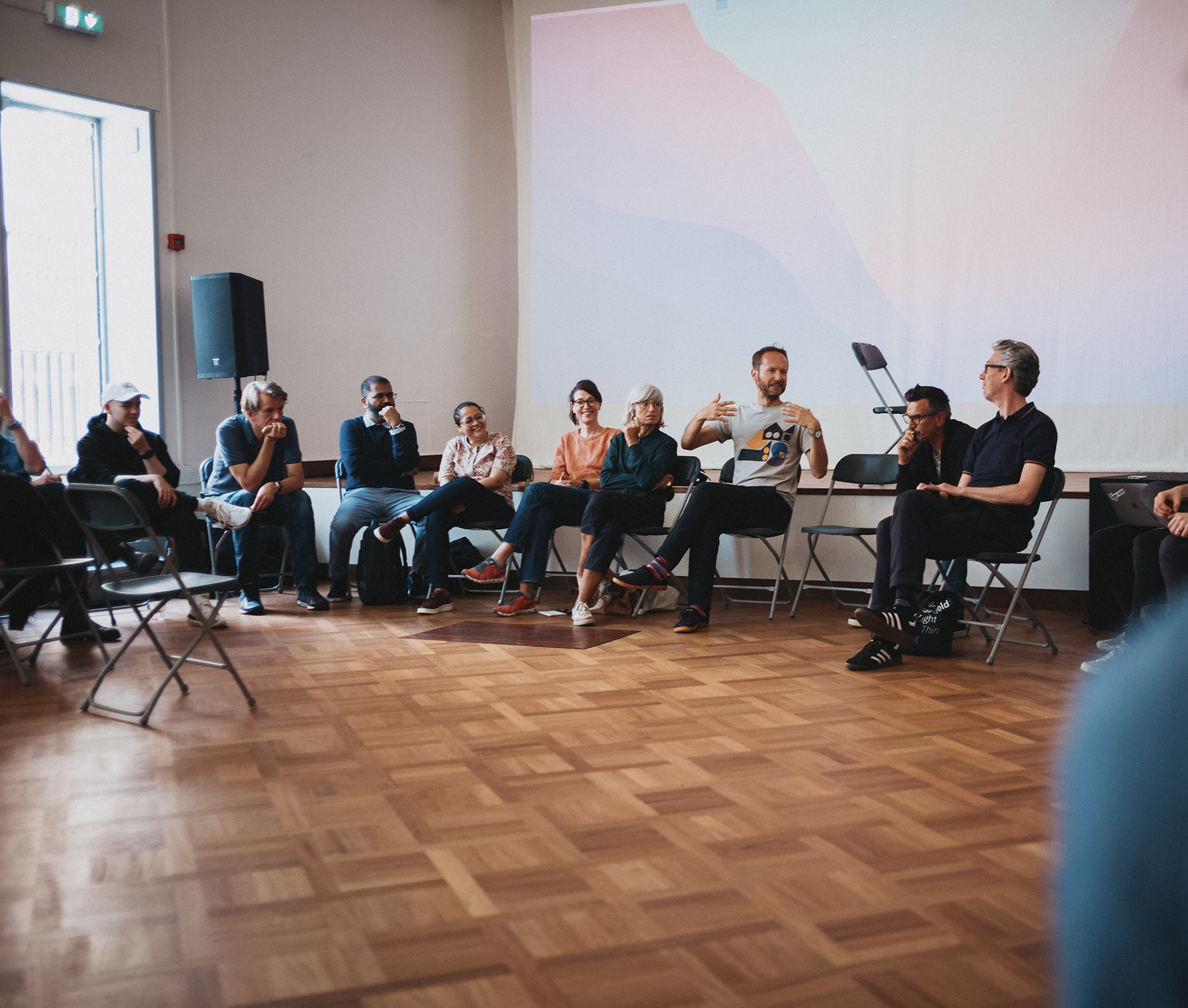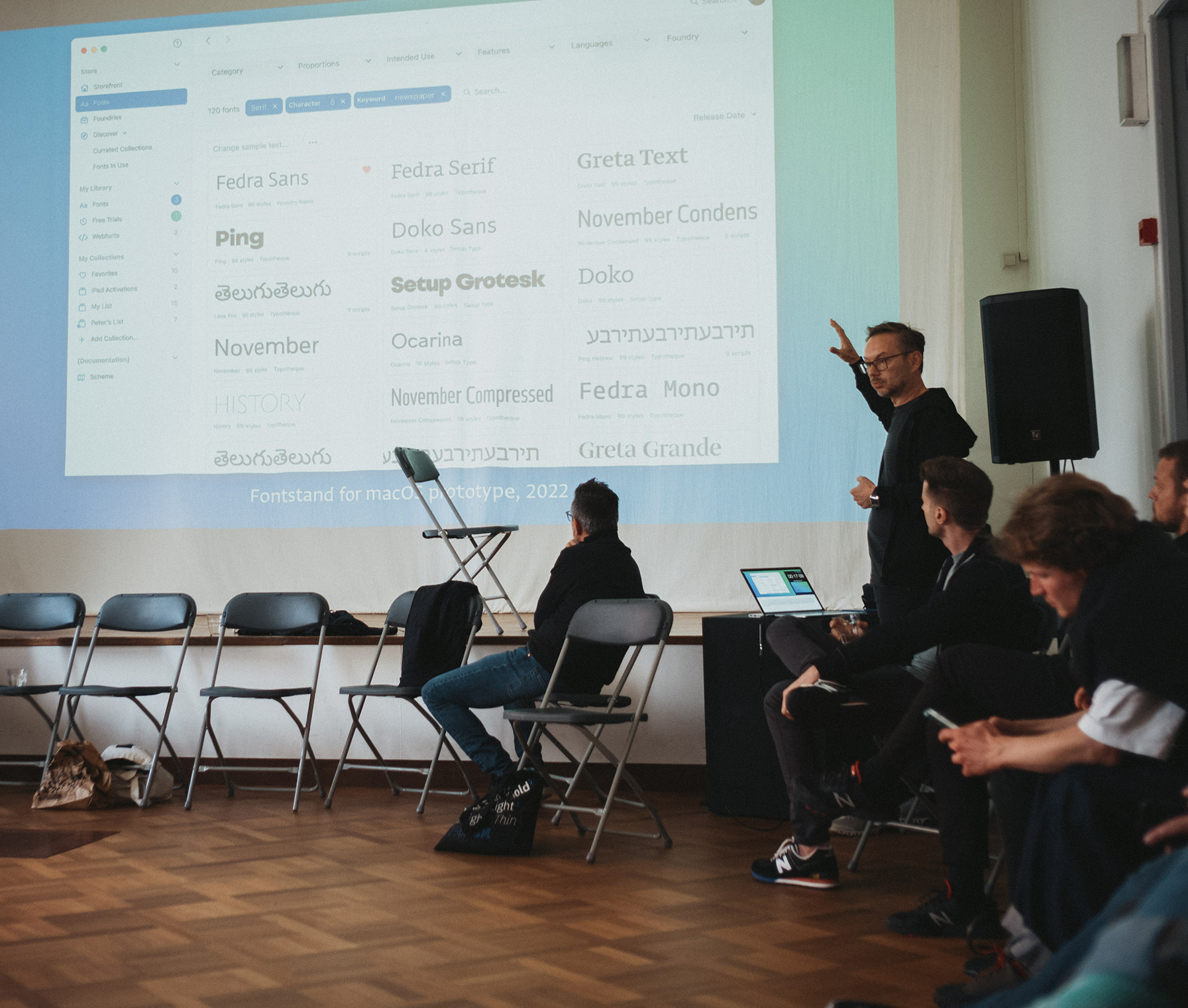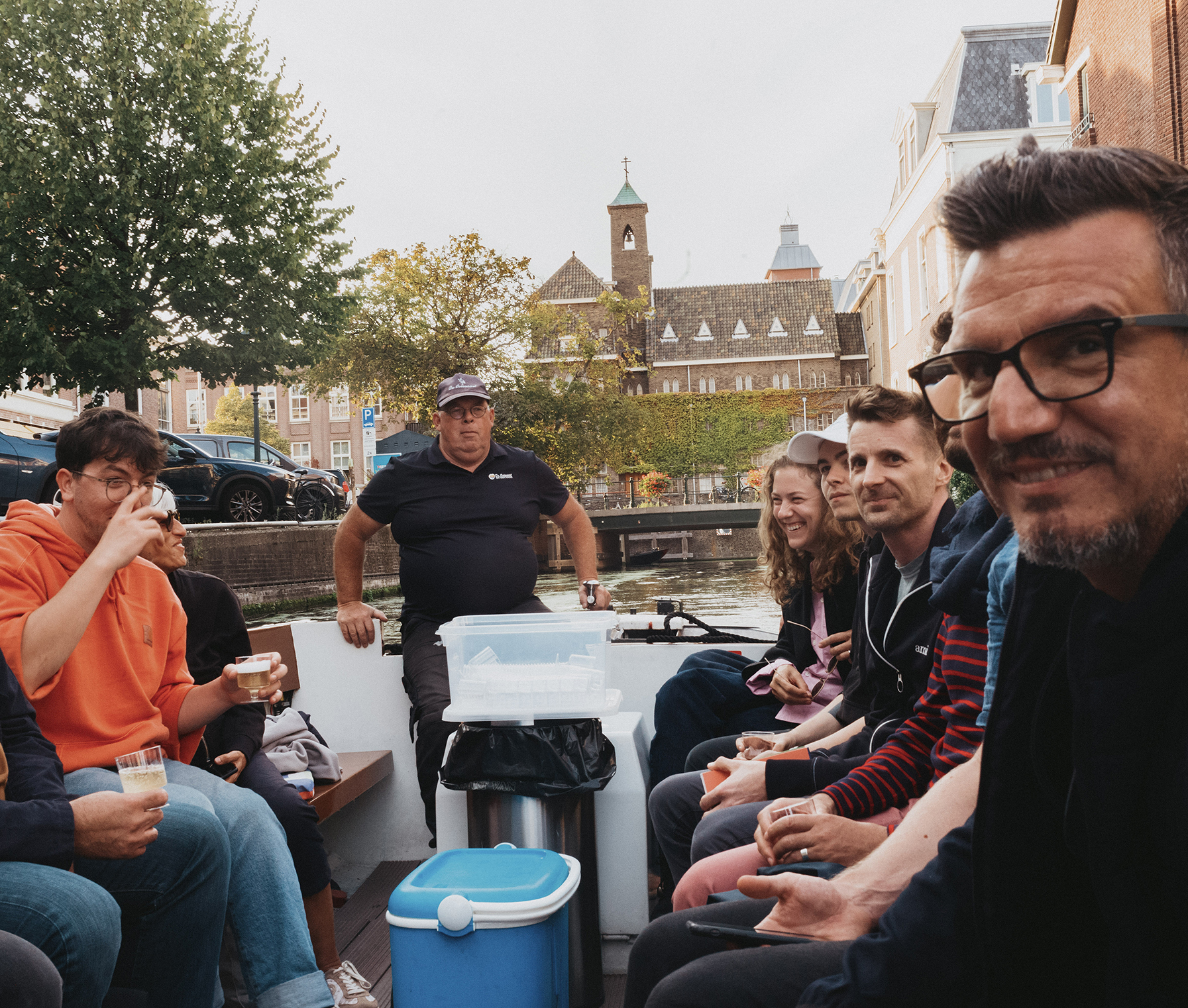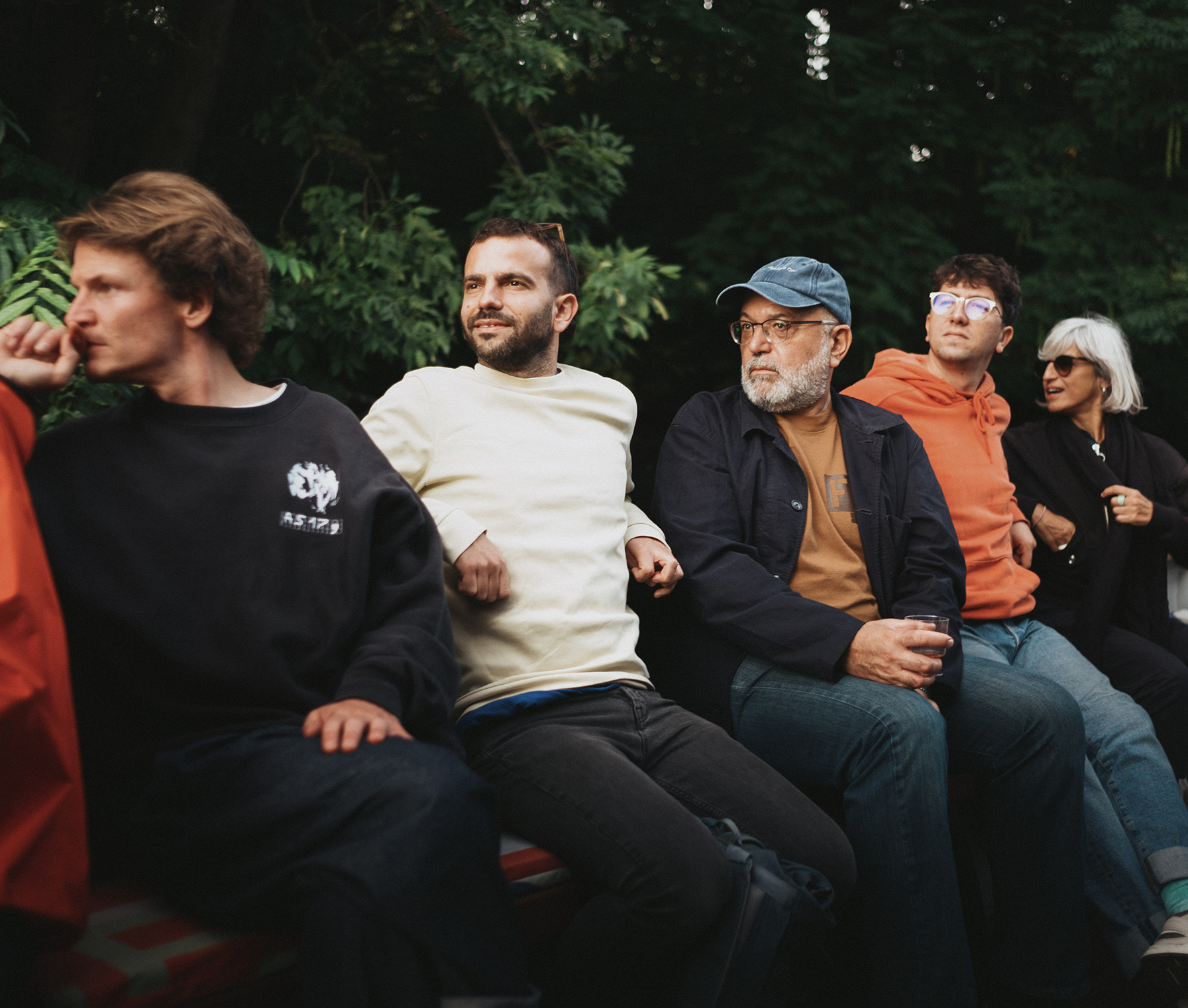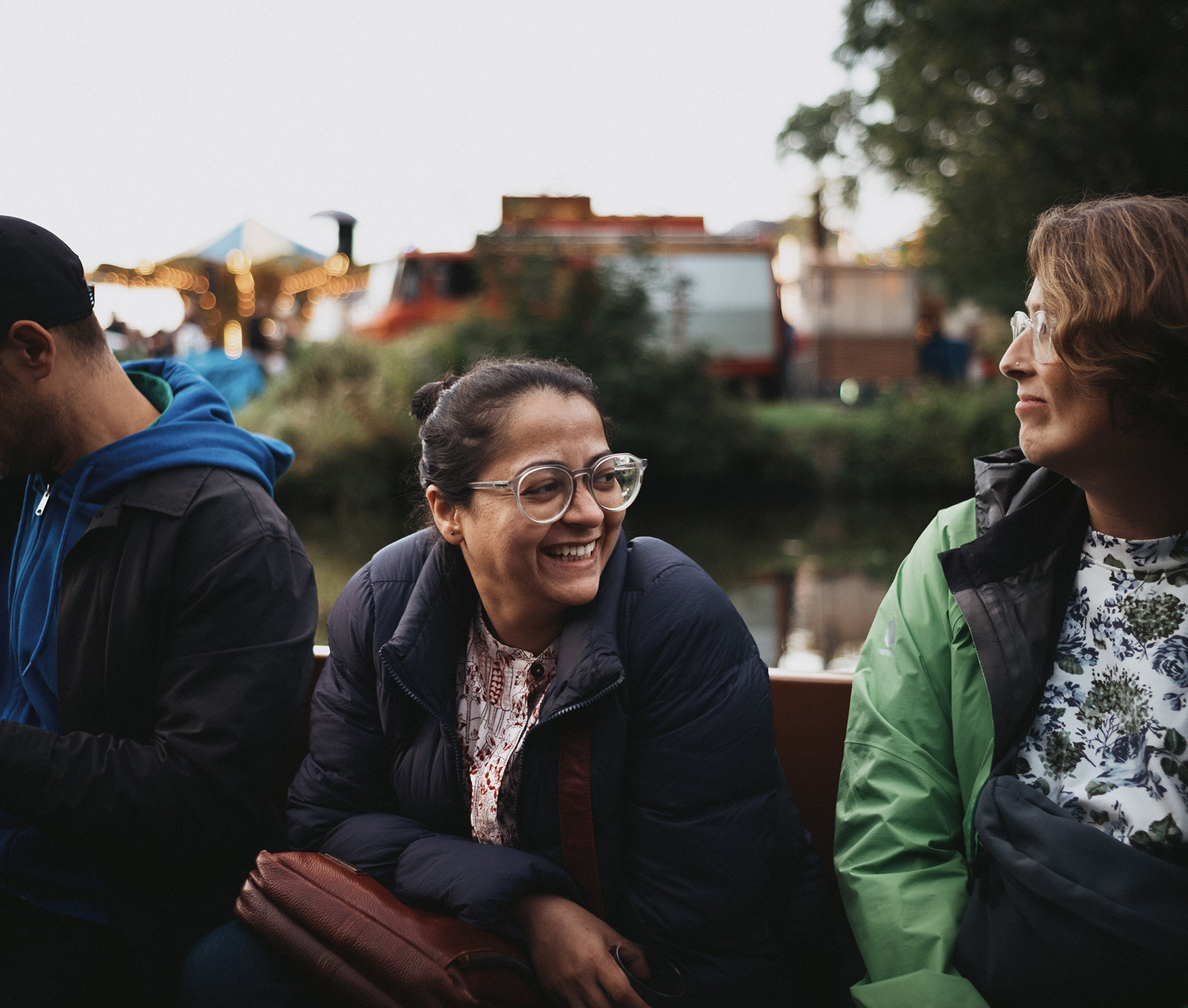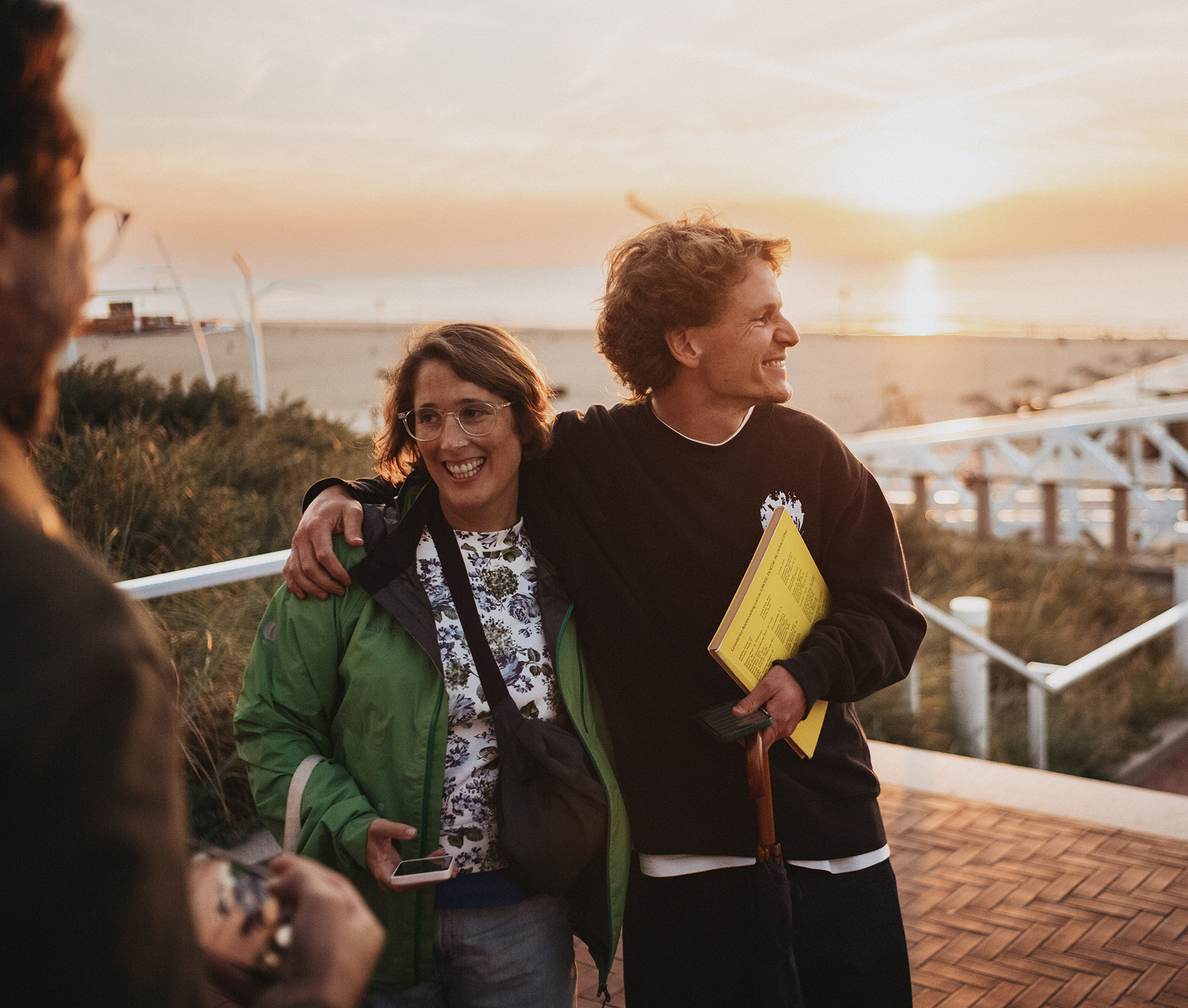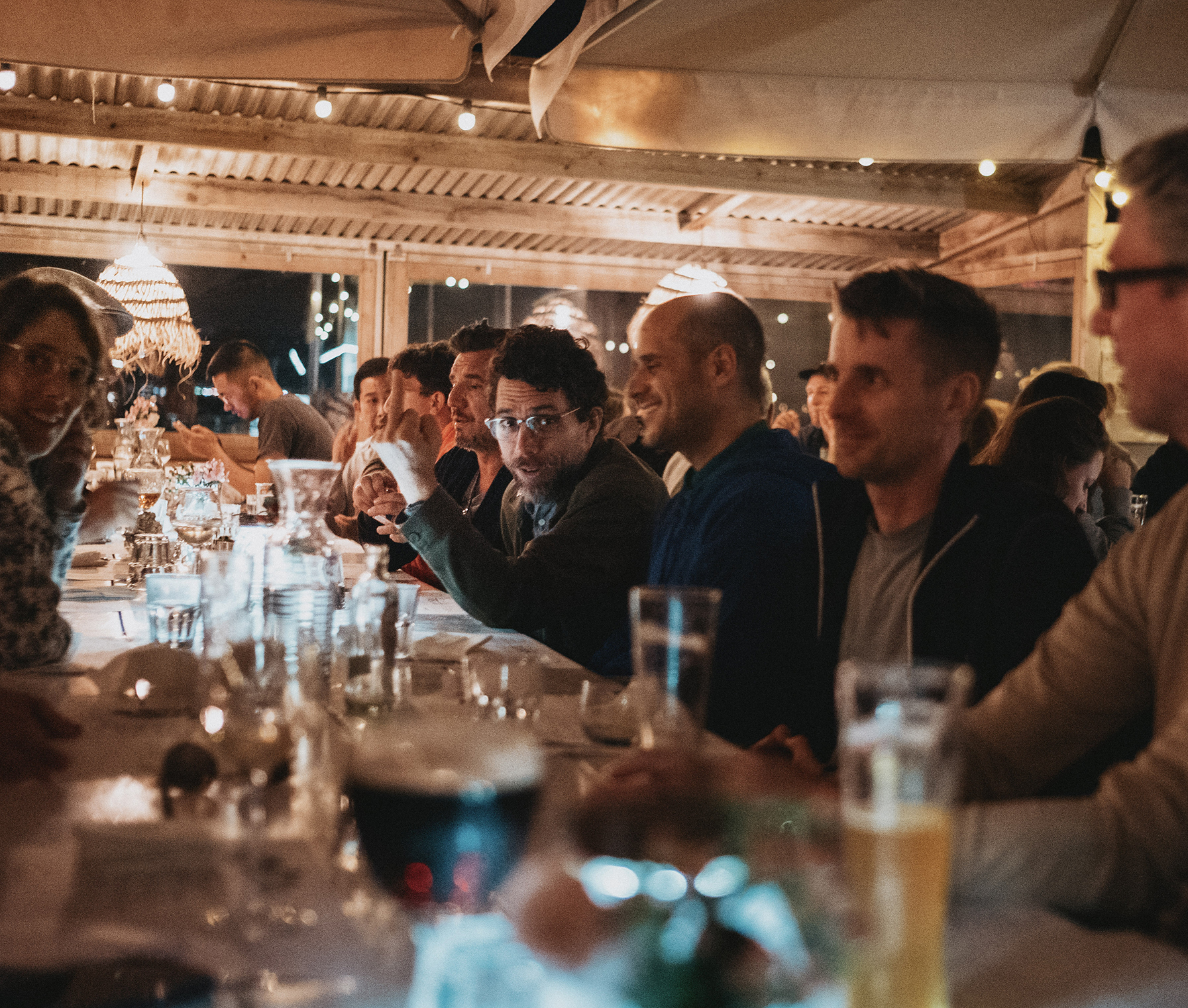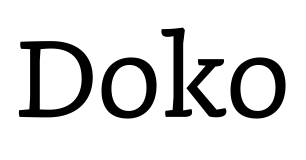Fontstand organized its third conference earlier this month. The event was the first Fontstand get-together since 2019’s conference in Porto. For 2020 we had planned to meet in Dublin. However, the Covid-19 pandemic made that impossible. Over 200 people attended this year’s events. The conference proper took place on Saturday, September 9th, but some attendees gathered for other activities on Friday the 9th and Sunday the 11th.
When we initially announced this year’s Fontstand conference on social media, tickets sold out within a day. At that time, it was still unclear what pandemic measures would be in place over the summer. However, the interest among the designers wow read our posts to meet each other in person again was so high that a new venue was selected, which could hold more attendees.
Getting to The Hague
In the end, we had to contend with other difficulties. Due to a looming strike, the Dutch rail service announced a few days before the conference that no trains would run in the Netherlands on the 9th. We expected a full house of 240. Perhaps because of those difficulties, some people did not attend in the end. Still, nearly everyone managed to get to The Hague. The local community and active attendees on social media played a big role by improvising carpooling on the fly and providing information about buses that traveled from Amsterdam and Schiphol airport.
The type community helped make the conference so successful in other ways. Thanks to its generosity, we were able to provide tickets to three designers from Ukraine. Sixteen students were also able to purchase reduced-price tickets because of community contributions. We even received donations from type designers whose fonts are not on the Fontstand service and who did not attend the conference themselves.
On Friday afternoon, before the conference began, attendees who had already arrived in The Hague could visit local type designers and foundries in their studios. Three people opened their doors: Paul van der Laan from Bold Monday, Akiem Helmling from Underware and West Den Haag, and Peter Biľak from Typotheque. The TypeMedia postgraduate course at the Royal Academy (KABK) was also open to visitors. They were greeted by Erik van Blokland, who heads the program. Many of this year’s conference attendees were TypeMedia alumni.
Before you read any further, allow me one personal note: Often in this article, I use the phrase “we,” and when I do so, I mean “Fontstand.” Although I attended the conference, I was not involved in its planning. I was also not one of the many Fontstand helping hands who helped make the event possible. Rest assured, dear reader, that I was just as thrilled to attend an in-person event in The Hague as all the people who were responsible for its going off without a hitch.
The official program was packed
Our conference’s location was inside the Sound & Vision media museum. Attendees arrived on Friday evening to experience a multi-hour keynote by Irma Boom, one of the most renowned book designers alive today. Afterward, most people stayed to mingle for a while. The museum lobby was probably where most people at the conference first saw each other again, often for the first time in three years or more.
The main program began Saturday at 9 am. So many attendees being there right at the start testified to their interest in the talks. Most speakers were Fontstand partners. Fontstand established its conferences to help make more font users aware of the Fontstand font-rental service and the typefaces available. However, there were a great many type designers in attendance, including designers who had long known many of the people on stage, and were glad to make the trip and see them again.
Although the conference did not have a theme, almost half of the presentations involved the relationships between multiple writing systems. In their talks, three duos discussed this from a type-design perspective. First, Pascal Zoghbi and Linda Hintz illuminated some details behind their collaboration on the Okaso and Oskura typefaces. Using manuscripts from Spain in which romance languages were written with the Arabic script as a starting point, Linda and Pascal designed those typefaces with Arabic and Latin script support. Later in the morning, Sarang Kulkarni and Noopur Datye from Ek Type in Mumbai explained how their office tackled multi-script lettering and type design. Some of Ek Type’s fonts support ten different writing systems.
Yanek Iontef and Daniel Grumer, who operate the Fontef foundry in Israel, lent some insight into the variety of Hebrew typefaces students at the Bezalel Academy of Art and Design in Jerusalem have examined over the last several decades. They also spoke about new Arabic typeface resources being prepared for the academy’s students, especially the growing percentage of students whose native language is Arabic instead of Hebrew. Shoko Mugikura’s presentation was in the realm of using type rather than type design. She highlighted errors that Japanese designers often make when incorporating English text into their work and the mistakes that Western designers make when adding Japanese. During a break, Shoko also organized a Japanese/Chinese calligraphy demonstration.
Two talks addressed font technology in a broad sense: Ulrike Rausch’s lecture on The Power Of Handwriting Fonts used her work to address the fundamental principles of OpenType substitution features and color fonts. Elias Hanzer gave the most Variable-Fonts-centric presentation. He spoke about ABC Arizona and the exciting possibilities of a family that has an unusual range of styles. Three more individuals covered additional areas of type-design content. For instance, Jeremy Mickel gave a thrilling, highly-illustrated presentation on his custom type-design practice. Jean François Porchez presented an overview of the influences typefaces have had on each other, including cases where one might say that one person copied another designer’s work. Porchez, a former president of ATypI, also touched on the historical efforts of ATypI figures like Charles Peignot and John Dreyfus to create a framework that would prevent new typefaces from being copied. Finally, Indra Kupferschmid gave us a behind-the-scenes look at how she uses filtering possibilities to help Fontstand’s users find the typefaces they want.
One noticeable element that kept the conference’s tone light and upbeat was the lack of moderators. Instead of naming specific persons to moderate the day, members of the Fontstand community volunteered in advance to introduce a speaker and ask one question after each presentation was over.
More gathering and interaction
Following the conference, most attendees booked tickets for an Indonesian buffet at The Grey Space in the Middle, a project space for creatives in the center of The Hague. In fact, the buffet tables were placed directly one floor below Erik van Blokland’s studio. There was probably more space and time for attendees to catch up with each other and chat here than in the coffee breaks at the conference’s primary location.
Fontstand also uses its conferences as an opportunity for the service’s partner foundries to meet and discuss the platform’s future. One online meeting was held during the pandemic, but the partner get-together on Sunday afternoon was the first in-person partners’ meeting since 2019. Initially, Fontstand’s partners met at West Den Haag, another artists’ space in the middle of The Hague. West Den Haag is the former US Embassy to the Netherlands, which the Bauhaus architect Marcel Breuer designed. Underware’s Akiem Helmling, who is involved with West Den Haag, gave the Fontstand partners a tour of the building before the meeting began. After the meeting, everyone traveled by boat to the beach at Scheveningen for dinner.
Stay tuned for details about the next conference
Fontstand plans to organize another conference in 2023. The location and the dates are not determined yet, but stay tuned for more information! We will surely share details here and via Fontstand’s Twitter account.

